- Top Colleges
- Top Courses
- Entrance Exams
- Admission 2024
- Study Abroad
- Study in Canada
- Study in UK
- Study in USA
- Study in Australia
- Study in Germany
- IELTS Material
- Scholarships
- Sarkari Exam
- Visual Stories
- College Compare
- Write a review
- Login/ Register
- Login / Register

Work Education: Meaning, Importance, Skills, Objectives

Pallavi Pradeep Purbey ,
May 29, 2024
Share it on:
Work education provides students with exposure to social and economic activities inside and outside the classroom. It helps them understand and build skills related to work education which will help them uplift themselves and be independent.
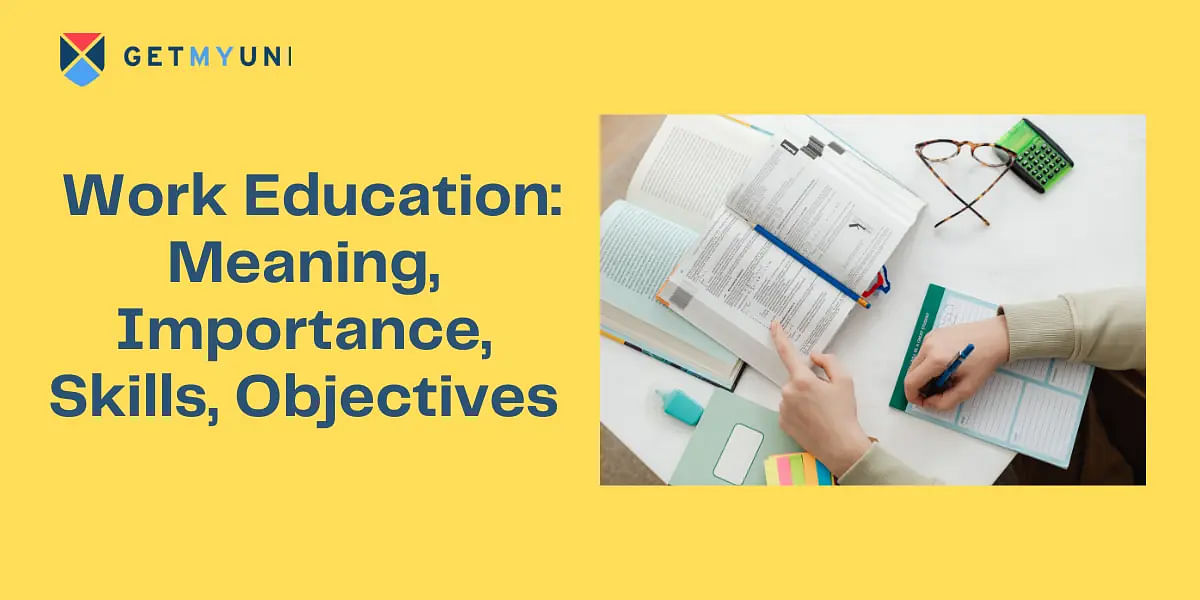
Work Education comprises activities consisting of services, foods, and community development in various areas of human needs such as health and hygiene, food, clothing, recreation, and social service in accordance with the mental abilities and manual skills of children at various stages of education.
Work education results in services valuable to the community, besides the gratification of self-fulfillment. It focuses on building manual characters. The main objective of work education is to ensure a greater sense of worldly knowledge and develop respect for workers among the students.
Table of Contents
What is Work Education?
Why work education, objectives of work education, importance of work education, advantages of work education, list of activities in work education.
Work education is the nature of knowledge that provides an identical significance to the community and social services by creating consciousness for the wellbeing of the people and society. An essential concept of work education is that it has a manual spirit. Therefore, work education plays an emphasis on learning while working in any field.
Below are some features of Work Education.
- Work education provides both knowledge and skills through understandable and graded programs and helps people enter into a world of work.
- It acts as a different curricular area for offering children opportunities for participating in social and economic activities inside and outside the classroom.
- The prolific manual work situations are drawn from health and hygiene, food, shelter, clothing, recreation, and community service.
- The skills to be developed in this field should comprise knowledge, understanding, practical skills, and values throughout need-based life activities.
- Pre-vocational education should get a prominent place at work education to let students choose various activities according to their interests.
Also Read: 10 Problem Solving Courses You Must Enrol Into Right Now
Work Experience has been named as Work Education and thus makes it a fundamental part of education. It develops;
- Personality.
- Positive work values.
- Constructive habits.
Moreover, work education conveys crucial knowledge related to career and develops proper work skills which can help the children to become productive in meeting their day to day activities.
Work Education helps students develop skills like work values, productivity, and self-reliance. In addition, work education allows students to identify their natural interests and aptitudes in selecting suitable courses of study.
Also Read: What is a Junior College? Here's What to Know
Work education has specific objectives, which are very important to give the right direction to people and the community. It acts as a vital part of the learning process resulting in goods or services considered valuable to the community. Work education focuses on teaching various socially desirable values such as;
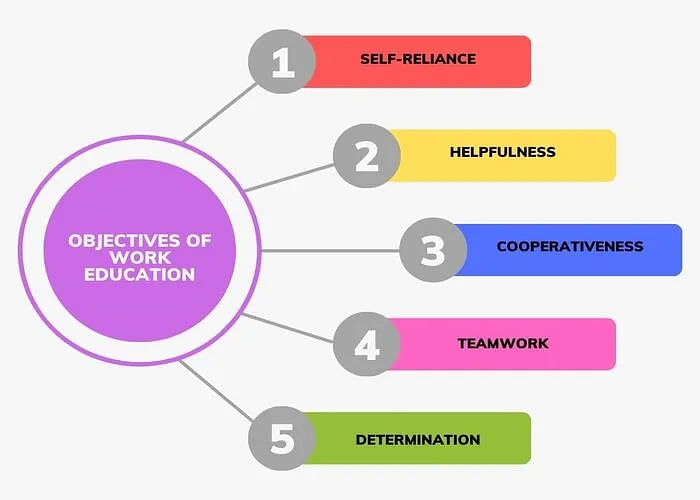
Below is the list of objectives of work education.
- Identify the needs of every individual and their family and community concerning food, health, and hygiene to understand the working environment.
- Familiarize oneself with productive activities in the community in various sectors. It helps in gathering information about various activities in society.
- Know the sources of raw materials and understand the use of tools and equipment to produce goods and services by workers. It helps in gathering essential information.
- Develop skills for the assortment, procurement, arrangement, and utilization of tools and materials for different forms of productive work. It also helps in incorporating new skills.
- Develop self-esteem and confidence through accomplishment in productive work and services.
- Develop a deeper opinion for the environment and wisdom of belonging, responsibility, and commitment to society. It helps in developing a sense of belongingness within people.
- Develop reverence for manual work and regard for manual workers in the community to give them the utmost respect.
- Develop work habits such as punctuality, honesty, discipline, efficiency, and dedication to duty.
- Develop self-esteem and self-assurance through achievements in productive works and services in various fields.
- Develop a deeper apprehension for the environment and a sense of belongingness, responsibility, and commitment to society to ensure the community's welfare.
- Develop alertness of socio-economic problems of the society to ensure people about the changes if made.
Also Read: Buddhist Education System in India: Meaning, Objectives, Subjects
Work education is regarded as very important, meaningful, and the ongoing manual work is organized as a vital part of teaching-learning procedures that are functional to society and the satisfaction of doing work. It is essential for all education segments, i.e., primary, secondary, higher secondary, and higher education. Work education can be granted through a well-developed, channeled, and structured program.
Work education is an integral part of education as,
- It helps to bridge the gap between manual workers and white-collar workers in society.
- Work education gives respect to all types of workers in all sectors, and also creates social awareness for the welfare of society.
- It builds coordination in hand actions and brain activities.
- Work education promotes socially useful physical labor by inheriting educational activities in various fields.
- It acts as a necessary and significant factor in learning different activities and the processes to pursue a particular objective.
- Work education is discernible in the form of valuable services and productive work for the community.
- It is associated as a necessary factor with all the aspects of knowledge in a multi-level education system.
- Work education is based on the principle of learning by doing and practicing.
Also Read: Importance of Adult Education
Work education aids in various factors to the students and the people who are looking to work in varied areas. Students gain a plethora of knowledge about almost every field, and strategies are built on understanding and practicing such education. In addition, students are involved in activities that help them understand the concept of work education.
Below is the list of advantages of work education.
- Work education links classroom learning to the real world and makes students practice various activities.
- Work education gives opportunities to perform skills in real-world scenarios beyond theoretical learning.
- Work education helps students develop soft skills for the better manifestation of gifts.
- Work education gives students a chance to watch professionals in action entitled to work in various activities.
- It helps students associate with potential employers to broaden their network. And it leads to increased student enrollment with varied skills.
- Motivates students to understand and comprehend working areas.
- Work education provides opportunities for individualized instruction to perform skill-based activities. And it gets the community involved by providing an array of exciting work.
- Work education builds a pool of skilled workers to make the empire rise.
- Teaches soft skills that help in maintaining patience while working.
- Work education lowers recruitment costs for employers as there are people who would be highly skilled in a limited number of activities.
Also Read: What is Quality Education? Meaning and Importance
Work education includes activities of services, foods, and community development. It focused on health and hygiene sectors, food, clothing, recreation, and social service in harmony with children's mental abilities and manual skills related to work education. Below is the list of activities any person can enroll themselves in.
- Computer Education
- Drawing and Painting
- Work Experience
- Western Music
- Vocal Music
- Knitting and Stitching
- Gadgets learning
- Western Dance
- Creative Thinking
- General Assembly
- Sports and Games
- English Lab
- Smart Class
- Classical Dance
- Instrumental Music
Work education encourages children to know the needs of themselves, their families, and society. The aim is to build students' personalities to have a successful life by having moral values in their pocket of energy.
Also Read: Top 10 Benefits of Environmental Education 2024
Who gave the concept of work education?
What is called work education?
What is the history of work education?
POST YOUR COMMENT
Related articles.
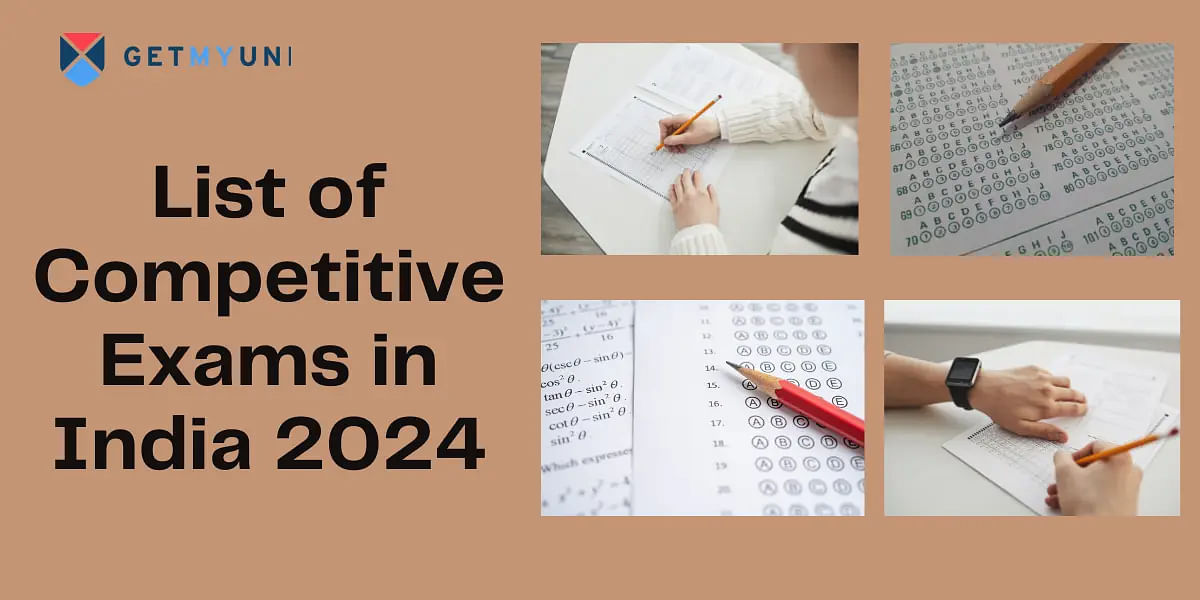
List of Competitive Exams in India 2024

Top 10 Toughest Exams in India 2024
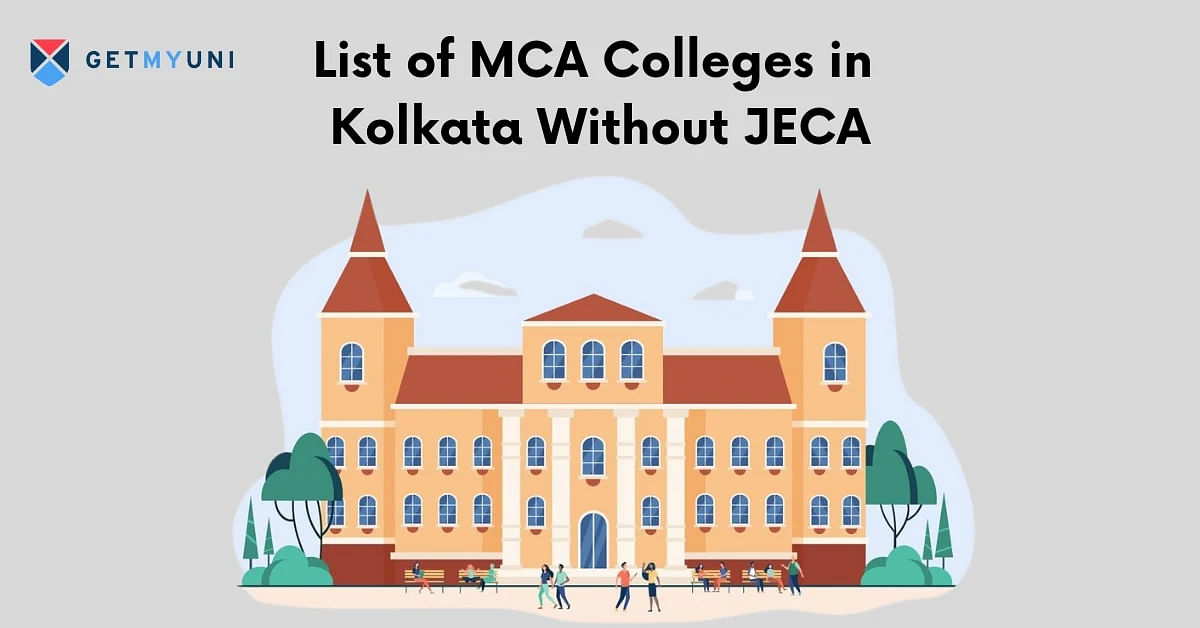
List of MCA Colleges in Kolkata Without JECA

How to Calculate CGPA? CGPA to Percentage, Formula
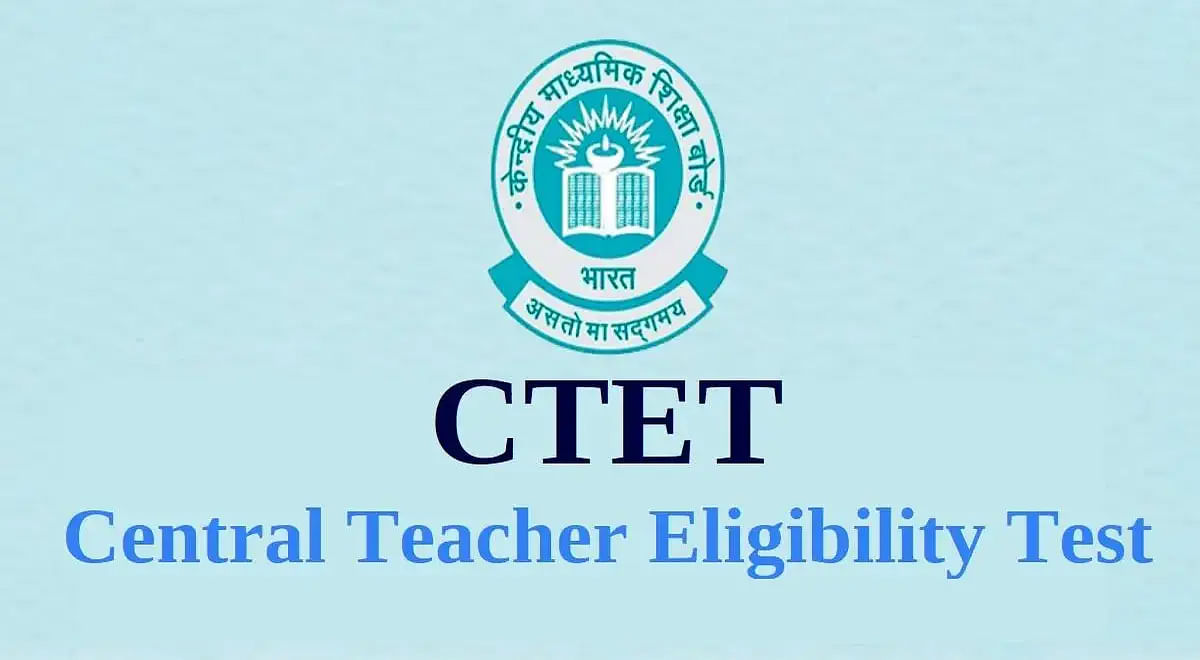
Last Minute Revision Tips for CTET 2024
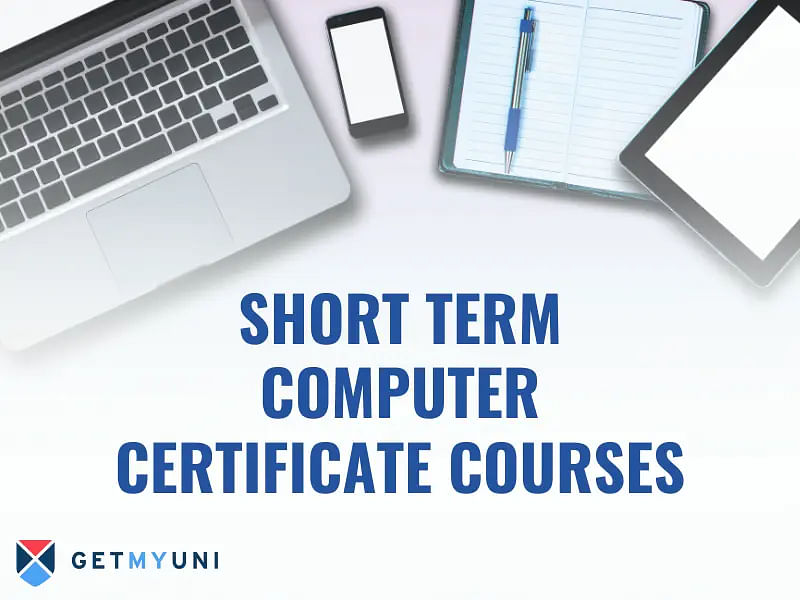
10 Short Term Computer Certificate Courses after 10th and 12th

Bharathidasan University Syllabus 2024: Download PDF
Get Free Scholarship worth 25000 INR
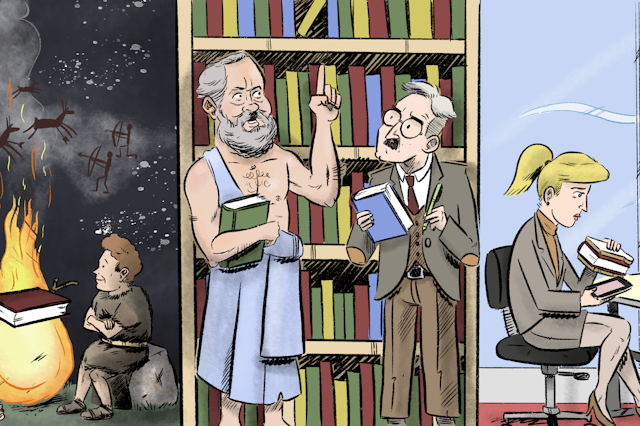
What’s the point of education? It’s no longer just about getting a job
Researcher for the University of Queensland Critical Thinking Project; and Online Teacher at Education Queensland's IMPACT Centre, The University of Queensland
Disclosure statement
Luke Zaphir does not work for, consult, own shares in or receive funding from any company or organisation that would benefit from this article, and has disclosed no relevant affiliations beyond their academic appointment.
University of Queensland provides funding as a member of The Conversation AU.
View all partners
This essay is part of a series of articles on the future of education.
For much of human history, education has served an important purpose, ensuring we have the tools to survive. People need jobs to eat and to have jobs, they need to learn how to work.
Education has been an essential part of every society. But our world is changing and we’re being forced to change with it. So what is the point of education today?
The ancient Greek model
Some of our oldest accounts of education come from Ancient Greece. In many ways the Greeks modelled a form of education that would endure for thousands of years. It was an incredibly focused system designed for developing statesmen, soldiers and well-informed citizens.
Most boys would have gone to a learning environment similar to a school, although this would have been a place to learn basic literacy until adolescence. At this point, a child would embark on one of two career paths: apprentice or “citizen”.
On the apprentice path, the child would be put under the informal wing of an adult who would teach them a craft. This might be farming, potting or smithing – any career that required training or physical labour.

The path of the full citizen was one of intellectual development. Boys on the path to more academic careers would have private tutors who would foster their knowledge of arts and sciences, as well as develop their thinking skills.
The private tutor-student model of learning would endure for many hundreds of years after this. All male children were expected to go to state-sponsored places called gymnasiums (“school for naked exercise”) with those on a military-citizen career path training in martial arts.
Those on vocational pathways would be strongly encouraged to exercise too, but their training would be simply for good health.
Read more: Guide to the classics: Homer's Iliad
Until this point, there had been little in the way of education for women, the poor and slaves. Women made up half of the population, the poor made up 90% of citizens, and slaves outnumbered citizens 10 or 20 times over .
These marginalised groups would have undergone some education but likely only physical – strong bodies were important for childbearing and manual labour. So, we can safely say education in civilisations like Ancient Greece or Rome was only for rich men.
While we’ve taken a lot from this model, and evolved along the way, we live in a peaceful time compared to the Greeks. So what is it that we want from education today?
We learn to work – the ‘pragmatic purpose’
Today we largely view education as being there to give us knowledge of our place in the world, and the skills to work in it. This view is underpinned by a specific philosophical framework known as pragmatism. Philosopher Charles Peirce – sometimes known as the “father of pragmatism” – developed this theory in the late 1800s.
There has been a long history of philosophies of knowledge and understanding (also known as epistemology). Many early philosophies were based on the idea of an objective, universal truth. For example, the ancient Greeks believed the world was made of only five elements: earth, water, fire, air and aether .
Read more: Where to start reading philosophy?
Peirce, on the other hand, was concerned with understanding the world as a dynamic place. He viewed all knowledge as fallible. He argued we should reject any ideas about an inherent humanity or metaphysical reality.
Pragmatism sees any concept – belief, science, language, people – as mere components in a set of real-world problems.
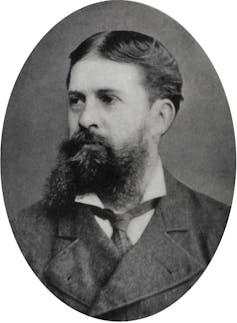
In other words, we should believe only what helps us learn about the world and require reasonable justification for our actions. A person might think a ceremony is sacred or has spiritual significance, but the pragmatist would ask: “What effects does this have on the world?”
Education has always served a pragmatic purpose. It is a tool to be used to bring about a specific outcome (or set of outcomes). For the most part, this purpose is economic .
Why go to school? So you can get a job.
Education benefits you personally because you get to have a job, and it benefits society because you contribute to the overall productivity of the country, as well as paying taxes.
But for the economics-based pragmatist, not everyone needs to have the same access to educational opportunities. Societies generally need more farmers than lawyers, or more labourers than politicians, so it’s not important everyone goes to university.
You can, of course, have a pragmatic purpose in solving injustice or creating equality or protecting the environment – but most of these are of secondary importance to making sure we have a strong workforce.
Pragmatism, as a concept, isn’t too difficult to understand, but thinking pragmatically can be tricky. It’s challenging to imagine external perspectives, particularly on problems we deal with ourselves.
How to problem-solve (especially when we are part of the problem) is the purpose of a variant of pragmatism called instrumentalism.
Contemporary society and education
In the early part of the 20th century, John Dewey (a pragmatist philosopher) created a new educational framework. Dewey didn’t believe education was to serve an economic goal. Instead, Dewey argued education should serve an intrinsic purpose : education was a good in itself and children became fully developed as people because of it.
Much of the philosophy of the preceding century – as in the works of Kant, Hegel and Mill – was focused on the duties a person had to themselves and their society. The onus of learning, and fulfilling a citizen’s moral and legal obligations, was on the citizens themselves.
Read more: Explainer: what is inquiry-based learning and how does it help prepare children for the real world?
But in his most famous work, Democracy and Education , Dewey argued our development and citizenship depended on our social environment. This meant a society was responsible for fostering the mental attitudes it wished to see in its citizens.
Dewey’s view was that learning doesn’t just occur with textbooks and timetables. He believed learning happens through interactions with parents, teachers and peers. Learning happens when we talk about movies and discuss our ideas, or when we feel bad for succumbing to peer pressure and reflect on our moral failure.

Learning would still help people get jobs, but this was an incidental outcome in the development of a child’s personhood. So the pragmatic outcome of schools would be to fully develop citizens.
Today’s educational environment is somewhat mixed. One of the two goals of the 2008 Melbourne Declaration on Educational Goals for Young Australians is that:
All young Australians become successful learners, confident and creative individuals, and active and informed citizens.
But the Australian Department of Education believes:
By lifting outcomes, the government helps to secure Australia’s economic and social prosperity.
A charitable reading of this is that we still have the economic goal as the pragmatic outcome, but we also want our children to have engaging and meaningful careers. We don’t just want them to work for money but to enjoy what they do. We want them to be fulfilled.
Read more: The Melbourne Declaration on Educational Goals for Young Australians: what it is and why it needs updating
And this means the educational philosophy of Dewey is becoming more important for contemporary society.
Part of being pragmatic is recognising facts and changes in circumstance. Generally, these facts indicate we should change the way we do things.
On a personal scale, that might be recognising we have poor nutrition and may have to change our diet. On a wider scale, it might require us to recognise our conception of the world is incorrect, that the Earth is round instead of flat.
When this change occurs on a huge scale, it’s called a paradigm shift.
The paradigm shift
Our world may not be as clean-cut as we previously thought. We may choose to be vegetarian to lessen our impact on the environment. But this means we buy quinoa sourced from countries where people can no longer afford to buy a staple, because it’s become a “superfood” in Western kitchens.
If you’re a fan of the show The Good Place, you may remember how this is the exact reason the points system in the afterlife is broken – because life is too complicated for any person to have the perfect score of being good.
All of this is not only confronting to us in a moral sense but also seems to demand we fundamentally alter the way we consume goods.
And climate change is forcing us to reassess how we have lived on this planet for the last hundred years, because it’s clear that way of life isn’t sustainable.
Contemporary ethicist Peter Singer has argued that, given the current political climate, we would only be capable of radically altering our collective behaviour when there has been a massive disruption to our way of life.
If a supply chain is broken by a climate-change-induced disaster, there is no choice but to deal with the new reality. But we shouldn’t be waiting for a disaster to kick us into gear.
Making changes includes seeing ourselves as citizens not only of a community or a country, but also of the world.
Read more: Students striking for climate action are showing the exact skills employers look for
As US philosopher Martha Nussbaum argues, many issues need international cooperation to address . Trade, environment, law and conflict require creative thinking and pragmatism, and we need a different focus in our education systems to bring these about.
Education needs to focus on developing the personhood of children, as well as their capability to engage as citizens (even if current political leaders disagree) .
If you’re taking a certain subject at school or university, have you ever been asked: “But how will that get you a job?” If so, the questioner sees economic goals as the most important outcomes for education.
They’re not necessarily wrong, but it’s also clear that jobs are no longer the only (or most important) reason we learn.
Read the essay on what universities must do to survive disruption and remain relevant.
- Ancient Greece
- The future of education

Senior Research Fellow - Women's Health Services

Head of School, School of Arts & Social Sciences, Monash University Malaysia

Chief Operating Officer (COO)

Clinical Teaching Fellow

Data Manager
- International Peace and Security
- Higher Education and Research in Africa
- Andrew Carnegie Fellows
- Great Immigrants
- Carnegie Medal of Philanthropy
- Reporting Requirements
- Modification Requests
- Communications FAQs
- Grants Database
- Philanthropic Resources
- Grantee FAQs
- Grantmaking Highlights
- Past Presidents
- The Gospel of Wealth
- Other Carnegie Organizations
- Andrew Carnegie’s Story
- Governance and Policies
- Media Center
Why We Must Connect Education and the Future of Work
A lack of alignment among K–12, higher education, and the world of work threatens to compromise our resilience and success as a country. Education leaders at the Corporation argue that we must redesign our educational systems to reach a broader set of students

Fundamental goals for American public education are to ensure that each student is prepared to be an active participant in a robust democracy and to be successful in the global economy. This requires coordinated efforts among government, philanthropy, the business community, and the education sector. However, as our nation’s economic and labor market opportunities evolve, the lack of alignment among K–12, higher education, and the world of work is further exposed and compromises our resilience and success. Our institutions are working to meet the opportunities and demands of the future of work in relative isolation. We must encourage systematic connections that reach across the educational, political, and economic domains to holistically prepare students for life, work, and citizenship. This demands a redesign of educational and employment options for all students. We must ask tough questions about what contributions are needed from each sphere today to prepare the workforce of tomorrow.
Today’s high school students are arriving at college underprepared: 40 percent fail to graduate from four-year institutions, and 68 percent fail to graduate from two-year institutions. [1] Yet the future of work will require higher — not lower — college graduation rates. Already, our economy has 16 million recession-and automation-resistant middle-income jobs that require some postsecondary credential, as well as 35 million jobs that require a bachelor’s degree or higher. [2] Nearly half of American employers say they are struggling to fill positions — the highest number in more than a decade — citing dearths of applicants, experience, and both technical and soft skills as their biggest challenges. [3]
As our nation’s economic and labor market opportunities evolve, this lack of alignment among K–12, higher education, and the world of work will become further exposed and will compromise our resilience and success as a country. At present, students without access to higher education already experience less mobility and lower lifetime salaries. [4] Looking forward, if K–12 and higher education do not redesign their approaches to reach a broader set of students, we might experience even greater labor shortages and income disparities. If we want to alleviate these issues and prepare students for the careers of the future, it is imperative that we close the chasm between K–12 and higher education.
Those attempting to reform the education system are familiar with the ways in which it is fragmented. Many have experienced the unintended consequences that come from working in isolation and proceeding with untested assumptions, especially during efforts to scale innovations or foster long-term sustainability. We believe the solution is to work more integratively: to resist the temptation to tackle siloed, singular components and instead collaborate on large-scale transformations designed around a unified vision.
Looking forward, if K–12 and higher education do not redesign their approaches to reach a broader set of students, we might experience even greater labor shortages and income disparities.
That vision, when considering American public education, is to prepare each student for active participation in a robust democracy and success in an advanced global economy. Accomplishing this demands an approach that reaches across educational, political, and economic domains to seamlessly prepare students for life, work, and citizenship. It demands the redesign of educational and career pathways to allow for cross-pollination among all sectors, from business to government to philanthropy — and it demands asking tough questions about what each sphere must contribute today to prepare the workforce of tomorrow.
Higher education can play a unique role because it has the ability to reach in several directions: toward both K–12 schools and educators, and businesses and future employers. Since it is often under the control of the state, higher education can also reach across to the governor, mayor, and other decision- and policymakers. As such, higher education can do more than effect change within a single institution; instead, it can help to enact networks and policies across an entire city or state. In short, to prepare students to become citizens of the world — who also have economic opportunities in the future workplace — stakeholders must abandon their traditional silos and work together to achieve coherence.
The Case for Coherence
Linear, laser-focused strategies are appropriate when consequences are predictable, contexts are similar, and results are easily measured and few in number. But in the world of education, where contexts are diverse, the level of transformation needed is enormous, and the number of stakeholders is high, linear approaches to change do not work. They accomplish superficial, rather than meaningful, improvements and can lead to missteps and frustration.
To create longer-term solutions at scale, we must accept that education is a complex social system, and design strategies for change around that fundamental fact. If our goal is to move toward 21st-century teaching and learning that better prepares young people for the dynamic world of work, traditional top-down, isolated, programmatic approaches will not succeed. Rather, to effect broad change, we must be thoughtful, flexible, and inclusive, and we must consider myriad factors, including the vantage points and resources of all stakeholders.
Three Design Principles for Coherence
In one attempt to catalyze this shift, Carnegie Corporation of New York launched the Integration Design Consortium in 2017. The corporation extended grants to five organizations to design and implement two-year projects aimed at reducing fragmentation in education and advancing equity. During our collaboration with these initiatives — each focused on different disciplines, such as human-centered design, systems thinking, and change management — we saw several themes emerge again and again. Irrespective of the project or context, these principles seemed to be influential in making progress toward coherence. For those striving for educational change, we believe these three principles can serve as a foundation upon which to design innovative solutions, and a lens through which to envision ways of thinking and working differently.
Cultivating a Shared Purpose Rather than assuming that everyone engaged in educational improvement has similar priorities, deliberate attempts must be made to develop a shared understanding of what students need most during their journeys through the system. The work of defining this purpose cannot be done in an isolated manner; instead, a collective vision should be cocreated by various stakeholders, then anchored by thoughtful implementation planning. Developing a cohesive vision has multiple benefits, including increasing broad buy-in and helping individuals understand how their actions can lead to change at scale.
One promising initiative that exemplifies this approach is the Cowen Institute at Tulane University, which shares its purpose of advancing youth success with a multitude of stakeholders in its home city of New Orleans. In addition to disseminating salient research and implementing several direct service programs, the Cowen Institute develops and leads citywide collaboratives focused on promoting access to and persistence in college and careers. These include the New Orleans College Persistence Collaborative and the College and Career Counseling Collaborative, bringing together counselors and practitioners from high schools and community-based organizations across New Orleans under the common goal of increasing students’ access to and persistence in college and careers.
Rather than assuming that everyone engaged in educational improvement has similar priorities, deliberate attempts must be made to develop a shared understanding of what students need most during their journeys through the system.
By engaging in a shared review and understanding of data centered on the needs of all students, these communities of learning play an important role in cultivating a shared sense of purpose across a diversity of organizations and institutions. At the same time, they provide members with professional development, the opportunity to share best practices, and a means of engaging in collective problem-solving centered on improving college and career success for New Orleans youth.
Cocreating Inclusive Environments This principle, which has its roots in user-centered design, encourages the consideration of various points of view when developing policies, prioritizing input from those who will be directly affected by the outcome. It also urges individuals to assess their own beliefs before creating policies that reverberate through the entire system, and advocates the shifting of power structures so that those most affected have the opportunity to share their perspectives and play a role in the decision-making process. It is only by identifying the actors in the system, understanding their perspectives, and using their input that we can create inclusive and effective programs.
Transforming Postsecondary Education in Mathematics (TPSE Math) is one example of a movement to create an inclusive postsecondary environment. It focuses on a discipline that has traditionally been a barrier to student success: math.
In one study of 57 community colleges across several states, 59 percent of students were assigned to remedial math courses upon enrollment, and, of those, only 20 percent completed a college-level math course within three years. [5] Through TPSE Math, leading mathematicians have convened stakeholders across the country to change mathematics education at community colleges, four-year colleges, and research universities so that it better meets the needs of a diverse student body and their diverse future careers.
For example, TPSE has provided significant support in the national movement to develop multiple mathematics pathways for students. The goal is for every student to have the opportunity to take a rigorous entry-level mathematics course relevant to his or her field of study and future career and to significantly reduce the time for underprepared students to complete their first college-level math course. This results in more inclusive math departments and courses that focus on success for all students, not only those who will go on to be math majors or to remain in academia.
TPSE has also promoted cross-sector engagement by facilitating conversations about effective and innovative practices — including the connections between college mathematics and the world of work — and then sharing those learnings across institutions. These math departments are supporting a rich set of interdisciplinary academic experiences and pathways designed to prepare students with the mathematical knowledge and skills needed for engagement in society and the workforce.
Building Capacity That Is Responsive to Change To create infrastructure and processes that will be effective over the long term, it is crucial to acknowledge and accept the dynamic nature of the education system. This means prioritizing relationships and trust, and viewing a project’s initial implementation as the first of multiple iterations and trials, each of which considers the potential impact on different stakeholders. This is crucial because achieving broader coherence across the education system can seem daunting, so it is more manageable to identify a specific gap or disconnect to address, such as the transition from college to career.
Focusing on particular barriers and trying out solutions before prescribing them at scale acknowledges the dynamism of the sector and the complexities of coherence, while making meaningful progress on issues that matter.
The University Innovation Alliance (UIA), for instance, takes an agile, human-centered approach to increasing the number and diversity of college graduates in the United States. Since its founding in 2014, this national coalition of 11 public research universities has produced 29.6 percent more low-income bachelor’s degree graduates per year, amounting to nearly 13,000 graduates annually. The UIA estimates that the total will reach 100,000 by the 2022–2023 academic year. [6] *
True to the nature of the research institutions leading the work, the UIA accomplishes this through experimentation and iteration. One area of focus for the network has been ensuring student success beyond graduation through redesigning college-to-career supports to better ensure students find gainful employment upon graduation. The project uses design thinking, with its rapid prototyping of ideas and short feedback cycles, in service of reimagining career services to better support low-income students, first-generation students, and students of color.
The process of innovation starts with understanding the perspective of students and the current practices on campuses; providing career services professionals with the capacity, time, and connections they need to generate new campus solutions; and engaging employers and other stakeholders in the redesign. This approach is consistent with the vision of the UIA, that “by piloting new interventions, sharing insights about their relative cost and effectiveness, and scaling those interventions that are successful [,] . . . [its] collaborative work will catalyze systemic changes in the entire higher education sector. [7]
An Integrative Pathway to the Future
Strides in educational coherence are being made on a regional level, too. Tennessee and Colorado, for example, have adopted holistic cradle-to-career solutions that intentionally plan for the duration of their residents’ lifetimes, and the Central Ohio Compact has mobilized K–12, higher education, community-based organizations, and local industry with the goal of helping 65 percent of local adults earn a postsecondary credential by 2025. [8] Each of these initiatives exemplifies the design principles described earlier, by considering the experiences of key actors and employing a multistakeholder approach that includes policymakers — factors crucial to enacting change on a systemic level.
In most of the country, education, employment, and economic reform remain isolated in both policy and practice. If we continue down this path, limiting ourselves to what is possible within each of our silos, our mutual interests will soon be consumed by our differences.
Though these projects are promising, they are not enough. In most of the country, education, employment, and economic reform remain isolated in both policy and practice. If we continue down this path, limiting ourselves to what is possible within each of our silos, our mutual interests will soon be consumed by our differences. For the revolutionary changes that the future demands, we must move beyond this fragmented way of thinking and working, and accept that history’s boundaries no longer apply. We must take a coherent approach to connecting education and the future of work, harnessing integrative design principles to foster progress, flexibility, and inclusivity. To improve today and prepare for the future, we must build on these ideas together. We must embrace a user-centered approach that is designed around our ultimate goal: empowering and preparing our nation’s youth for fulfilling, engaged lives and productive careers, now and for decades to come.
[1] National Center for Education Statistics, “Undergraduate Retention and Graduation Rates,” May 2019, https://nces.ed.gov/programs/coe/indicator_ctr.asp .
[2] Anthony P. Carnevale, Jeff Strohl, Neil Ridley, and Artem Gulish, “Three Educational Pathways to Good Jobs,” Georgetown University, 2018, https://cew.georgetown.edu/cew-reports/3pathways/ , 10.
[3] Manpower Group, “Solving the Talent Shortage: Build, Buy, Borrow and Bridge,” 2018, https://go.manpowergroup.com/talent-shortage-2018#thereport , 5–7.
[4] Jennifer Ma, Matea Penda, and Meredith Welch, “Education Pays 2016: The Benefits of Higher Education for Individuals and Society,” College Board, 2016, https://trends.collegeboard.org/sites/default/files/education-pays-2016-full-report.pdf , 3–4.
[5] T. Bailey, D. W. Jeong, and S. W. Cho, “Referral, Enrollment, and Completion in Developmental Education Sequences in Community Colleges, Economics of Education Review 29, no. 2 (2010): 255–70.
[6] The University Innovation Alliance, “Our Results,” http://www.theuia.org/#about .
[7] The University Innovation Alliance, “Vision and Prospectus,” http://www.theuia.org/sites/default/files/UIA-Vision-Prospectus.pdf .
[8] Central Ohio Compact, “Central Ohio’s Most Critical Challenge,” http://centralohiocompact.org/what-is-the-compact/our-challenge/ .
Excerpted from The Great Skills Gap: Optimizing Talent for the Future of Work (Stanford Business Books, 2021), edited by Jason Wingard, Dean Emeritus and Professor of Human Capital Management at Columbia University School of Professional Studies. Reprinted with permission.
*Note: Since the publication of the book, UIA reports an increase of annual degrees to low-income students by 46 percent since launch. Overall annual bachelor's degrees have increased 30 percent, and annual bachelor's degrees to students of color have increased 85 percent. They have exceeded 100,000 degrees.
LaVerne Srinivasan is vice president of Carnegie Corporation of New York’s National Program and program director of Education, Farhad Asghar is the Education program officer of the Pathways to Postsecondary Success portfolio, and Elise Henson is a former program analyst at the Corporation.
TOP: (Credit: SolStock/Getty Images)

Five nonprofits work together to help low-income young people tap their cultural wealth and thrive in college and careers

Whether you call it digital, information, news, visual, or media literacy — it is vital for civic engagement and democracy
- Tools and Resources
- Customer Services
- Original Language Spotlight
- Alternative and Non-formal Education
- Cognition, Emotion, and Learning
- Curriculum and Pedagogy
- Education and Society
- Education, Change, and Development
- Education, Cultures, and Ethnicities
- Education, Gender, and Sexualities
- Education, Health, and Social Services
- Educational Administration and Leadership
- Educational History
- Educational Politics and Policy
- Educational Purposes and Ideals
- Educational Systems
- Educational Theories and Philosophies
- Globalization, Economics, and Education
- Languages and Literacies
- Professional Learning and Development
- Research and Assessment Methods
- Technology and Education
- Share This Facebook LinkedIn Twitter
Article contents
Vocational education.
- Stephen Billett Stephen Billett Griffith University, School of Education and Professional Studies
- https://doi.org/10.1093/acrefore/9780190264093.013.1739
- Published online: 18 July 2022
This chapter aims to discuss what constitutes the project of vocational education through the elaboration of its key purposes. Although taking many and diverse institutional forms, and being perhaps the least unitary of educational sectors, vocational education stands as a distinct and long-standing educational provision premised on its own specific set of purposes. It has long been central to generating the occupational capacities that societies, communities, and workplaces need, contributing to individuals’ initial and ongoing occupational advancement and their sense of selves as working age adults. It also has the potential to be, and often is, the most inclusive of educational sectors by virtue of engaging the widest range of learners within its programs and institutions. Yet, because its manifestations are shaped by country-specific institutional arrangements and historical developments, it defies attempts to easily and crisply define or capture the singularity of its purposes, forms, and contributions. In some countries it is a distinct educational sector, quite separate from both schools and universities. This can include having industry-experienced teachers. In others, it is mainly enacted in high schools in the form of a broadly based technology education, mainly intended for students not progressing educationally beyond schooling, which promotes and reinforces its low standing. In others again, it comprises in postsecondary institutions that combine general and occupational education. These distinctions, such as being either more or less general or occupational educational provision, also change across time as policy imperatives arise and decline. Much of vocational education provisions are associated with initial occupational preparation, but some are also seen more generally as preparation for engaging in working life, and then others have focuses on continuing education and training and employability across working lives. Sometimes it is enacted wholly within educational institutions, but others can include, and even largely comprise, experiences in workplaces. So, whereas the institutions and provisions of primary, secondary, and university education have relatively common characteristics and profiles, this is far less the case with what is labeled vocational education. Indeed, because of the diversity of its forms and purposes, it is often the least distinguishable of the educational sectors within and across countries. In seeking to advance what constitutes vocational education, the approach adopted here is to focus on its four key educational purposes. These comprise of (a) preparation for the world of work, (b) identifying a preferred occupation, (c) occupational preparation, and (d) ongoing development across working life.
- vocational education
- occupations
- educational purposes
- preparation for working life
- identifying an occupation
- developing occupational capacities
- continuing education training
You do not currently have access to this article
Please login to access the full content.
Access to the full content requires a subscription
Printed from Oxford Research Encyclopedias, Education. Under the terms of the licence agreement, an individual user may print out a single article for personal use (for details see Privacy Policy and Legal Notice).
date: 04 June 2024
- Cookie Policy
- Privacy Policy
- Legal Notice
- Accessibility
- [66.249.64.20|185.80.149.115]
- 185.80.149.115
Character limit 500 /500
- Health Science
- Business Education
- Computer Applications
- Career Readiness
- Teaching Strategies
« View All Posts
Career and Technical Education (CTE) | Work-Based Learning
What Is Work-Based Learning?
- Share This Article
June 4th, 2024 | 10 min. read
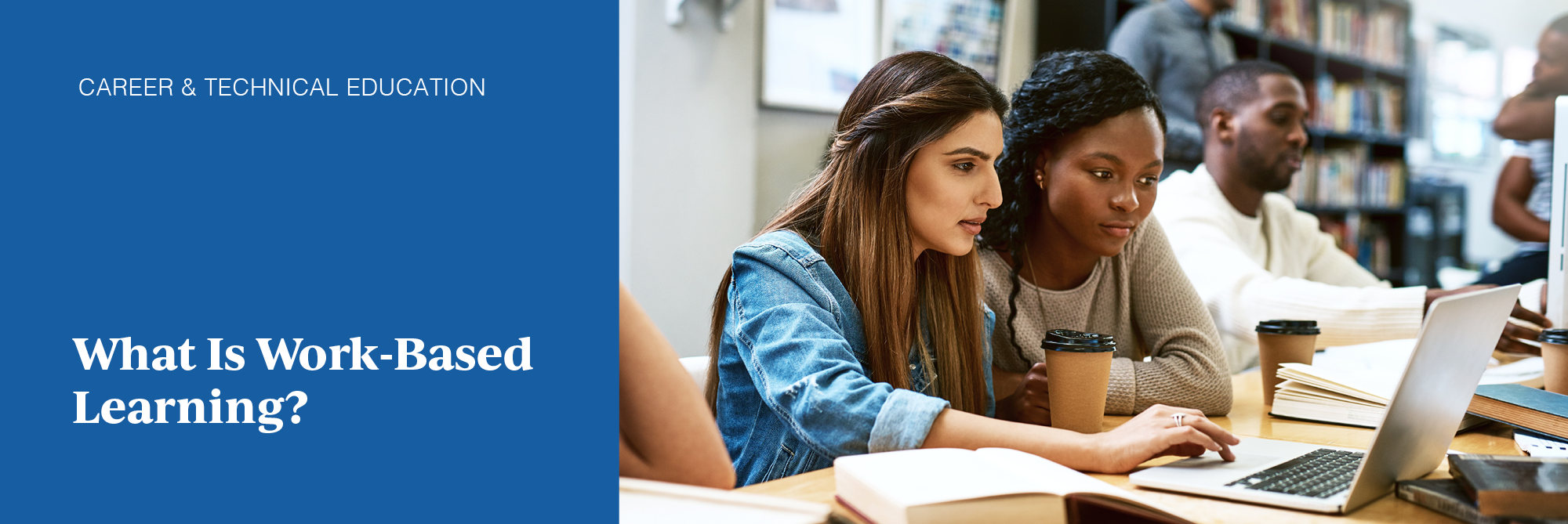
Brad Hummel
Coming from a family of educators, Brad knows both the joys and challenges of teaching well. Through his own teaching background, he’s experienced both firsthand. As a writer for iCEV, Brad’s goal is to help teachers empower their students by listening to educators’ concerns and creating content that answers their most pressing questions about career and technical education.
Print/Save as PDF
Work-based learning (WBL) is a federally-supported program in career and technical education (CTE) that connects workplaces to the classroom to prepare students for real-world careers .
While every state has its own variations of work-based learning and what it entails, the goal of every program is the same — to prepare the next generation of the American workforce .
It’s an ambitious project, and one that derives its momentum, impact, and success from its alliance of teachers, administrators, and industry partners. These three groups of stakeholders work together to create systems and scenarios that help students thrive and develop professionally.
Through work-based learning, states are prepping their CTE students to enter the workforce with actual career experience under their belts!
While the full impact of WBL will take years to completely understand, the US Department of Education has plenty of data on student success, communications, participation, and more.
So how can you define a federal program that has so much participation and variation throughout the United States?
In this article, we'll seek to define work-based learning, its qualities, and its applications. When you've finished reading, you should better understand how WBL contributes to learning so you can use it in your CTE program!
Defining Work-Based Learning
As a broad definition, work-based learning is any program that places students both in the classroom and the workplace . However, because WBL receives support from state and federal government, it has stringent requirements to ensure it is run effectively and to the maximal benefit of those who participate .
Here, you'll find a closer look at the specific attributes of an effective work-based learning program that complies with the federal requirements for WBL.
The U.S. Department of Education (DOE) places a strong emphasis on WBL activities , among other concepts.
A successful work-based learning program has to include activities that meet individual states’ definitions of appropriate instruction.
For example, the Commonwealth of Virginia has seven “types” of work-based learning strategies that are grouped into career exploration, pre-professional development, and career preparation. A compliant program must demonstrate how instruction falls into these categories.
Other states use similar models for defining WBL activities, but these categories often vary from state to state. It's best to check the individual requirements before your state before building a work-based learning partnership or program.
In addition to activities, work-based learning requires states to develop a unique framework for WBL along with an accompanying implementation guide.
The WBL framework helps ensure all programs are set up in a similar fashion so that they're effective in teaching key concepts regardless of the individual experiences of the participants. Meanwhile, the implementation guide works to create consistency across all programs by making it easier for schools to integrate work-based learning into their CTE programs.
A great example of using a framework and implementation guide in the state of Tennessee. Tennessee goes above and beyond in this area by providing resources that tell educators what they need to know before, during, and after students get placed in work-based learning programs.
Third, all work-based learning programs must receive input from local employers. That means the state is responsible for coordinating meetings with local employers and educators to verify the quality of work-based learning.
These meetings are run by separate organizations, like Colorado’s Workforce Development Council .
Meetings can cover student experiences in a work-based learning program, employer ideas for future changes, and even credentials that participants may earn for their time! This continual feedback helps improve and optimize individual programs to make work-based learning even more effective in the future.
Professional Development
Finally, all states must provide professional development to teachers, administrators, and other participants involved in work-based learning. Essentially, that means states have to give educators the tools and knowledge they need to make work-based learning programs successful.
States accomplish this in different ways. Once again, Tennessee is a great example of ongoing professional development because it offers credits and certifications for its educators. Virginia, on the other hand, makes it possible for teachers to visit specific employers throughout the state.
Your state may also have an entirely different system in place. Yet every state must offer professional development opportunities to ensure teachers, administrators, and employers are all on the same page for work-based learning!
However, all the variations between different states' work-based learning programs leads to another important question: If work-based learning is a federally-sanctioned activity, but every state can customize its own programs, then what types of work-based learning systems exist?
Qualities of Work-Based Learning
The type, scope, and funding of work-based learning programs varies throughout the United States. Work-based learning is supported at the federal level through Perkins funding, the Every Student Succeeds Act, and the Workforce Innovation and Opportunity Act.
However, that support from the federal level doesn’t make every single state’s work-based learning programs the same. States have distinct economies and occupational needs. As a result, the work-based learning program in Georgia will look different from the one in Alaska .
Still, you’ll find three primary qualities in all work-based learning programs, regardless of the state.
According to the US Department of Education, any work-based learning program must exhibit these three qualities to be successful:
- Alignment between classroom and the workplace
- Application of academic, technical, and employability skills
- Support from classroom and workplace mentors
Let’s take a look at all of these qualities in-depth.
Alignment is all about correlating industry demands, state standards, student training, and skills-based experience.
That means students who enter work-based learning programs can’t get paired with some random company that’s looking to farm out cheap labor. Similarly, employers have indicated that they’re willing to train and develop students’ professional skills, meaning they’re not interested in students looking to “coast” through an education program.
Alignment also means that workplaces have to create a map of tasks and show how they relate to academic information and classroom instruction. Students who enter those programs need time to reflect on their learning and experiences, as well.
Finally, teachers can track a student’s progress by going through a training program that helps them match work-based learning experiences to a curriculum.
Application
Application brings academic, technical, and employability skills into the same area.
A full-fledged work-based learning program will have “rigorous academic and employability skill requirements,” meaning that students have to qualify to participate in such a program.
In addition, work-based learning must also include hands-on experiences with additional activities around career awareness, exploration, preparation, and readiness. This ensures that each learner receives a holistic experience through WBL activities.
Support means that both instructors and workplaces keep students as their top priority.
This requires work-based learning programs to provide mentorship for students through instructors, supervisors, and coordinators.
On top of that, students must be allowed to develop relationships within a company, throughout their program, and in their local communities. Every student must also be monitored to ensure that they’re truly participating in the work-based learning program to the best of their abilities.
Finally, every company participant in work-based learning programs receives training on how to train students, foster their professional growth, and help them thrive professionally.
Where Does Work-Based Learning Apply?
Work-based learning (WBL) applies to students across the United States.
However, each state has its own system for WBL, and these systems work independently from one another. This means that the specific opportunities available to students will vary from state to state.
To understand the specific opportunities for work-based learning in your area, you'll need to find out more about how your state WBL program works.
You can research information on your state by using the Department of Education’s website and scrolling to the bottom of the page.
There, you’ll see a section of the page entitled Resources. By using the drop-down menus, you can navigate to relevant information that corresponds with each state.
How Do You Start Work-Based Learning?
Finally, if there isn't already a program established in your state or school district, you may be looking to start a work-based learning program.
To create a new work-based learning program, you can choose to work at one of three separate levels to create instructional opportunities.
Below, we'll consider what it takes to initiate a work-based learning program at the state, local, and student levels .
Setting up a new work-based learning program at the state level can be challenging because states differ so wildly when it comes to education funding, priorities, and applications.
The best way to jumpstart work-based learning in your state is to get in touch with your state’s department of education. Then, you can use the federal DOE’s work-based learning toolkit to guide your actions and discussions with other key individuals.
In general, you’ll have to look into five main areas of interest to create a program:
- Define work-based learning for the state
- Identify activities that fit the state’s definition
- Develop the work-based learning framework
- Obtain employer input for components and quality in work-based learning
- Establish professional development for administrators and teachers
That may seem like a lot of work, but it’s possible! Many states in the US have already created successful work-based learning programs, some of which dovetail with other career readiness priorities that the state set years ago.
The good news is that many states already have WBL programs established, which means you can move on to setting up a program in your school district!
When you start creating a work-based learning program in your local area, you don’t have to worry quite so much about the major parts of the system or how it works.
Instead, it’s more important that you look into the details, such as:
- Addressing employer liability concerns
- Vouching for your students to participating employers
- Offering different levels of participation for different companies
- Networking with companies, managers, and employees
These finer details are concerned with getting employers on the same page as your school for a work-based learning program.
It also requires you to vouch for the character of your participating students, which places you on the line for their behavior in the workplace. That’s why it’s important for you to be clear, conscientious, and selective with your students.
The student level is the area where you have the most discretion as a teacher or administrator in work-based learning. You get to decide how you present the program to your students and what you'll need to do to get them on board.
There are many options for presenting work-based learning to your students, but here are some ideas you can use to start:
- Appeal to a student’s desire to get out of the classroom
- Emphasize that students can earn money and experience at the same time
- Bring previous students into the classroom to talk about work-based learning, if available
- Bring employers into the classroom to talk about their companies
- Incentivize non-traditional students with grades based on their workplace performance instead of traditional classroom performance
These five ideas are just starting points, and you may have some ideas that completely differ.
Using your knowledge of your students will help drive you to the perfect way to present work-based learning to your classes.
Track Work-Based Learning Performance with Eduthings
Now that you know more about work-based learning (WBL), you're in a better spot to implement these valuable learning experiences in your CTE program!
But with work-based learning becoming an increasingly essential part of career and technical education, teachers and administrators need to track work-based learning performance in order to demonstrate the success of their programs and plan for future opportunities.
With students involved in a variety of work-based learning opportunities, it's critical that administrators and teachers have a CTE-specific data management solution to track their program's performance, such as Eduthings.
Eduthings integrates with your student information systems (SIS) to track vital information specific to your CTE program, including work-based learning hours and journaling. You can use this information to create custom reports that are simple to analyze and understand, so you can confidently grow your WBL program and build for tomorrow.
Want to learn more about Eduthings and if it's right for you? Discover Eduthings to learn how an integrated data management solution can help your CTE program:

- Career & Technical Education
- Early Learning
- English Learners
- Equitable Learning Environments
- Equity & Diversity
- Native Education
- Postsecondary Success
- School System Improvement
- Youth, Family & Community
- Applied Research
- Continuous Improvement
- Equitable Evaluation
- Implementation & Coaching
- Professional Development
- Research Partnerships
- State & Federal Technical Assistance
- Training & Curriculum Development
- Virtual Learning Development
- Senior Fellows
- Board of Directors
- Nelson Scholarship
What Is Career and Technical Education, and Why Does It Matter?

The COVID-19 pandemic and its impact on the labor market have caused significant anxiety for many college students and their parents. According to labor market analytics company Burning Glass, entry-level college hiring fell 45 percent since the start of the pandemic. This sharp decrease compounds existing concerns regarding higher education’s return on investment. Is college worth the cost when there is no guarantee of a well-paying job upon graduation?
College graduates continue to out-earn their peers who earned a high school diploma, but there’s a growing recognition that all students need better preparation for the workforce. With labor shortages in many high-skill, high-wage industries, post-college success depends more on the skills you’ve developed than the school you attended or the major you pursued.
What Is Career and Technical Education?
Today, more than ever, employers want to hire entry-level employees who can hit the ground running. This is where career and technical education (CTE) comes in. CTE is a broad term for education that combines academic and technical skills with the knowledge and training needed to succeed in today’s labor market. CTE prepares students for the world of work by introducing them to workplace competencies in a real-world, applied context.
Compared to vocational school of decades past, modern CTE spans nearly every industry. In addition to traditional pathways like automotive repair and construction, today’s CTE programs cover health sciences, engineering, entrepreneurship, computer science, sustainable agriculture, theater arts production, media, culinary arts, and many other fields.
In recent years, CTE has expanded dramatically in high schools across the country. Oregon’s Portland Public Schools (PPS) exemplifies what this expansion can look like in a large, urban school district. In 2012-13, PPS offered 19 CTE programs across 12 high schools. In the current academic year, students can select from 65 CTE programs. These programs are popular and well subscribed. Furthermore, the programs are designed for all students: those who want to attend a four-year college, those who plan to combine work and learning at a community college, and those who intend to enter the labor market directly.
Building Pathways to Both College and Career
CTE doesn’t replace academic learning; it complements traditional education by helping students at every level—middle school, high school, and college—develop practical skills. Research from the Regional Educational Laboratory Northwest found that Oregon students who enrolled in CTE in high school were just as likely to enroll in postsecondary education as their peers who did not participate in CTE. In addition, many high school CTE programs offer dual credit, helping students get a head start on postsecondary education by simultaneously earning high school and college credit.
High-quality CTE programming links secondary and postsecondary education in a sequenced series of courses, aligns curriculum with industry-validated standards, and provides hands-on, work-based learning experiences that enable students to apply their skills. CTE is not a “track” so much as a pedagogy; it contextualizes learning in real-word settings to spark students’ creativity and sense of possibility.
The Future of CTE
CTE and career pathways may receive increased federal interest and funding in the coming years. President Biden’s nominee for secretary of education, Miguel Cardona, is a technical high school graduate who emphasized the importance of career-related education in his Senate confirmation hearing. In addition, the Education Northwest is working with school districts, community colleges, and four-year colleges and universities across the country to build seamless pathways from secondary to postsecondary education that lead to satisfying, living-wage employment. Over the next several months, our blog will feature different aspects of our work that highlight the many moving parts that contribute to strong CTE programs, smooth transitions from secondary to postsecondary education, and successful employment. Building career pathways is a team sport. It requires the engagement and coordination of CTE teachers, guidance counselors, high school and college administrators, college faculty, employers, industry associations, and state education and workforce development agencies—all working together toward a common goal: to better prepare students for the complex and ever-changing world of work. Interested in CTE Practitioner Training Modules ? Education Northwest partnered with American Institutes for Research to co-author a series of self-guided training modules. These free modules strengthen your capacity to access, understand, and use CTE data and research as well as conduct your own research, particularly causal research. Additional recommendations.Share This Post

Changing Mindsets: Using District Data to Expand…
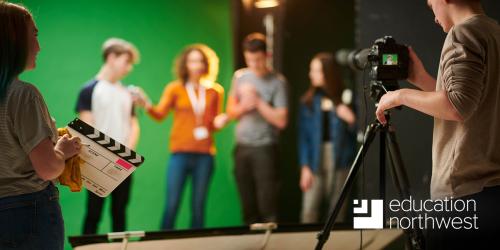
Beyond Compliance: Using Perkins Data to Improve CTE

Experience Matters: Scaling Workplace Learning for Youth
Building a clear path toward equitable education for all, together
Never miss the latest resources and insights.
- Areas of Work
Education Northwest 1417 NW Everett St, Ste 310 Portland, OR 97209 Phone: 503.275.9500
Satellite Office 322 E Front St. Boise, ID 83702

Copyright Education Northwest © 2024 | Terms of Use

- Toggle navigation
- Explore Themes
- Document Library
- Visualisation Gallery
- Methodology
- Data for Sustainable Development - UIS Blog
- Training and Workshops
- UNESCO website
Vocational education
Education that is designed for learners to acquire the knowledge, skills and competencies specific to a particular occupation or trade or class of occupations or trades. Vocational education may have work-based components (e.g. apprenticeships). Successful completion of such programmes leads to labour-market relevant vocational qualifications acknowledged as occupationally-oriented by the relevant national authorities and/or the labour market.
Source definition
ISCED 2011 http://uis.unesco.org/sites/default/files/documents/international-standa...
The Next Level of Work and Learning
- Posted January 13, 2022
- By Andrew Bauld
- Career and Lifelong Learning
- Cognitive Development
- Learning Design and Instruction
- Technology and Media
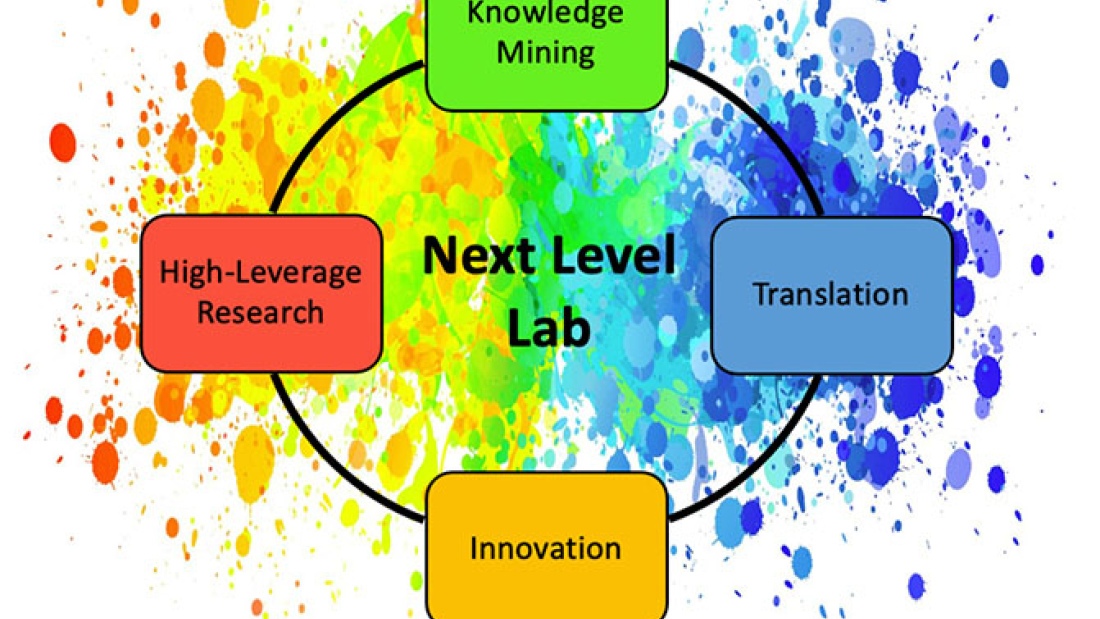
The workplace of the not-so-distant future will be one filled with volatility, complexity, and ambiguity. To navigate this changing and uncertain terrain over the course of their careers, students and adults will need to become lifelong learners, armed with the knowledge of how to transfer their skills to new workplace opportunities.
Project Zero’s Next Level Lab will look to unlock the wealth of recent research from the fields of cognitive science, neuroscience, and the learning sciences to better understand what it means to be an expert learner and to reimagine how learning happens — in both K–12 and workforce development. Born of an idea first pitched in 2019 to Professor Chris Dede and Principal Research Scientist Tina Grotzer by Ph.D. student Tessa Forshaw, the Next Level Lab will focus on giving a more expansive view of how these sciences can be applied in understanding learning and the important role technology can play in the process.
“A lot of people are interested in notions of the future of work, but there’s a complete absence of research from the lens of neuroscience and cognition about what it means to learn workforce skills and to then transfer to a workforce,” says Forshaw.
Intrigued, the faculty members signed on with Grotzer becoming Next Level Lab faculty director. With funding from Accenture Corporate Citizenship, the lab will bring together practitioners from across a variety of fields to create new visions for the possibilities of human performance.
The Next Level Lab launched its website this past October and includes updates on research projects along with helpful resources for educators and workforce development practitioners.
We spoke with Forshaw and Grotzer to learn more about Next Level Lab, it’s research, and the future of learning.

T-b: Tessa Forshaw, Tina Grotzer
One of the main focus areas for the Next Level Lab is exploring workforce development programs. Can you explain a bit about how these programs work?
Tessa Forshaw: The sector typically considers workforce development programs to be programs that are for 16-year-olds to older adults and that focus on preparing learners with workforce skills. They can be found at community colleges, vocationally focused high schools, at non-degree granting intuitions, coding boot camps, workforce development boards, industry groups, companies or employer organizations, or nonprofits like Jobs for the Future, Goodwill, the Institute for Veterans and Military Families, and NPower.
That said, there isn’t a widely agreed upon exhaustive definition of what a workforce development program is, and that’s part of why it is important we start studying the sector more closely. In 2015, McKinsey estimated spending on the sector to be $300 billion per year, and Georgetown University estimated it closer to $1.1 trillion.
Despite the size of the sector, something that the Next Level Lab is particularly interested in is that unlike in K–12 education, there’s no professional development or minimal certification requirements for workforce practitioners. Their backgrounds span from some of the most incredible and skilled educators to individuals who graduated from the program the year prior and are teaching while they find a job placement. We want to support workforce development educators to engage in a community of practice that centers around pedagogy and research-based instructional moves developed through the lab’s own research and from working directly with practitioners.
The lab will be doing research that will also help students. What will that work look like?
Tina Grotzer: All students can benefit from strategies about how to use their minds well through intentional processes. Our particular focus is on vulnerable youth who are underserved and/or who have struggled in traditional schools. My own work has considered how findings from cognitive science can help students to do their best learning. Research has demonstrated persuasively that effective thinking can be taught. Despite this, I don’t believe that field has delivered on the promise for how these findings could broadly benefit society, in particular around issues of transfer and accessibility. Too often, programs on thinking are focused on privileged populations. The skills may be unaligned with the cognitive neuroscience findings and may be too generic or taught in decontextualized ways, limiting their applicability. Informative and helpful findings exist, and we could do a better job translating it and getting it in the hands of the people who can use it. Further, this research offers new visions for what learners are capable of with the right kinds of support. That’s why we’re calling it Next Level Lab, to update our conceptions of what learners are capable of and to provide tools and resources to educators and learners to help actualize those conceptions.
Can you share some examples of the projects the lab is currently working on?
Forshaw: We’re interested in looking at this idea in response to job disruption of saying workers need to be reskilled. That’s very much a deficit mindset. You are probably familiar with headlines in the news saying things along the lines of “all truck drivers should learn to code.” From our perspective this is reminiscent of deficit theory in K–12. Telling people they had a job that’s now redundant and that they don’t know anything is such a bad message. Thus, one question we’re asking is if reskilling is always the right course of action, and one hypothesis is presenting a learner with multiple ways to sort their skills and helping them realize new contexts for how their skills might present them with a greater ability to transfer their skills from their past performance environment to a future one.
Another piece that researcher and HGSE doctoral student Eileen McGivney and I are looking at is the role of virtual reality experiences in supporting situational learning and interview preparation for formerly incarcerated individuals returning to the workforce and the mechanisms that make those tools helpful.
Grotzer: Chris Dede and research assistant Ashley Etemadi are pursuing two projects. The first, Project UPWARD (Upskilling Professionals in the Workforce to Augment Reckoning with Decision-making) is a collaboration with Upwardly Global. It aims to help immigrant and refugee professionals rebuild their careers in the U.S. and to understand the interaction of culture and decision-making, with a focus on reckoning and judgment. Immigrant workers are predicted to drive U.S. labor force growth over the next 15 years. Artificial intelligence (AI) is becoming increasingly proficient at calculation, computation, and prediction, or “reckoning,” skills. As machines take over the reckoning part of many jobs, workers will increasingly be valued for their human judgment skills such as decision-making under conditions of uncertainty, deliberation, ethics, and negotiation. The second, Project LIFTUP (Leveraging IA for a Future of Turbulence, Uncertainty, and Possibility) is a partnership with Goodwill of North Carolina that aims to enhance the existing job training curriculum for jobseekers and to develop materials and training that will help employers keep judgment in mind when interviewing, hiring, and supporting workers.
I am leading a project with Megan Cuzzolino, Lydia Cao, and Mingyue Sun to help learners, as embodied in social and emotional beings, understand the cognitive architecture of their minds to bring their learning and work to the next level and to function effectively in a dynamic and complex workforce landscape. In the NLL Moves: Acting like Fast Fish project, we are developing a set of moves to help learners use their minds more effectively and to modify the contexts around them to support learning and performance — just as fish create vortices in water to push off from to swim their fastest. We will test these in the classroom and workplace using a mixed methods approach and studying changes in how students frame and process tasks involved in thinking, learning, and workforce performance over time.
How do you see Next Level Lab fitting within the scope of the work being done at Project Zero and the larger HGSE community?
Grotzer: One of the strengths of Project Zero is that researchers are willing to study problems deeply and flexibly. They grapple in the problem space and that helps them to reposition problems and put them in a broader context, and that’s what Next Level Lab does. We can turn problems around as we consider them from a cognitive neuroscience perspective to introduce new possibilities for schools and workplace development.
Forshaw: One of the great benefits of sitting within the Project Zero community is our ability to leverage all the fantastic prior research and thinking on research based instructional moves and how to support educators to improve their teaching practice. While there are many fantastic workforce development programs out there, there also many that have great opportunity for improvement in terms of instructional design. And that’s also why this work is so critical to be done at HGSE. Often folks think workforce development should be left up to organizational behavior or similar academic disciplines, but we’re talking about education problems and learning problems — like what does good or bad pedagogy look like, how does the mind work — and HGSE’s existing research is a great place to start.
The lab is only in its first year, but what do you see as some of the lab’s potential contributions to the field?
Forshaw: I think one of the outcomes is that Next Level Lab will be a place for the learning sciences at HGSE to incubate design-based research. It’s an iterative method that’s about real-world findings and testing theories to see if they stand up in the real world. The second is to be a community of academics and practitioners, where the researcher and the practitioner can learn together and collaborate to move the workforce development sector forward. That’s nontraditional but there’s a real importance in having humility in how we approach a sector that provides economic dignity for a lot of people in this country.
Grotzer: This is research that needs to take place in the contexts where people are working to address the real challenges there. We have the opportunity to work collaboratively with practitioners on the ground and to put the cognitive neurosciences and learning sciences to work for them in ways that actualize the promise of what these fields of knowledge offer.

The latest research, perspectives, and highlights from the Harvard Graduate School of Education
Related Articles
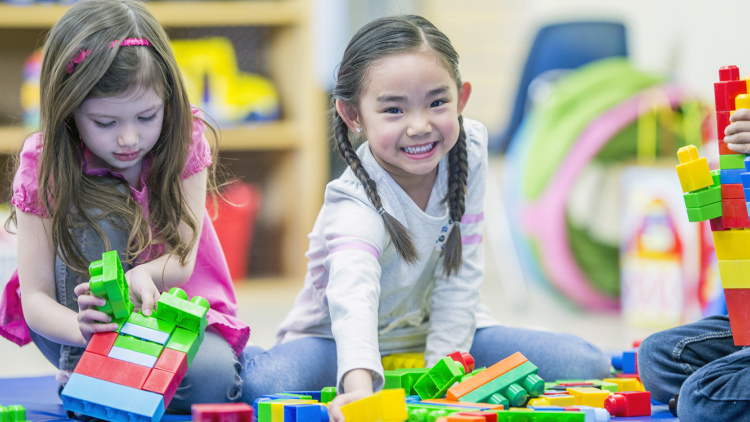
Embracing Learning Through Play
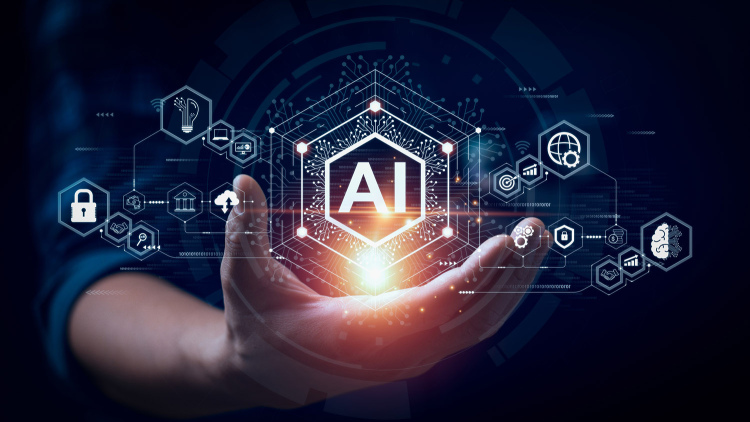
AI Won’t Take Your Job if You Know About IA
Intelligence augmentation shows that human + AI is an ideal partnership — and the future of white-collar work

5 Ways to Learn New Things in the New Year
- EN / EL / ES / PT / ZH

Work and education
‘Do well at school and you’ll get a good job,’ many a parent has told a child and many a teacher has told a teacher. What they mean is that higher levels of knowledge, skill and qualifications are linked to better-paid employment. They are right: level of education is a reliable predictor of adult earning capacity.
In the modern era of mass, institutionalised education, school performs the social role of sifting and sorting people into different kinds of jobs. One aspect of this role is simply functional: ordinary workers need some literacy and numeracy basics to function effectively in the workplace. Sometimes those basics are no more than rudimentary skills. At other times they reflect a set of dispositions inculcated at school: punctuality, a capacity to understand orders and a willingness to comply. Until recently, a relatively small number of workers also needed to have higher-level knowledge and skills, and so received the additional training required for them to be tradespeople or professionals.
More than providing skills for work, schooling’s promise also goes to the heart of the meaning and purpose of modern society. Education is one of the core commitments of an unequal society. Although not everyone will end up with jobs that are equally good, everybody has a chance to do well at school and get a good job – or so the argument runs among people who are convinced that today’s social arrangements are as good as it gets. Roughly speaking, the kind of job you have reflects how well you have done at school, and if you haven’t done well enough at school to get a good job, you have only yourself to blame. On the other hand, many social scientists would argue that chances are not that evenly balanced – not everybody comes from social circumstances that provide access to equally well-resourced education. In this socially critical view, society and education are not so fair at all (Bowles and Gintis 1976). However, whether you want to rationalise or critique an unequal society, the education-to-work nexus is a critical part of the explanation of how society works to distribute resources.
In this chapter, we examine the connections between education and three paradigms of work. The first two are widely known as Fordism and post-Fordism. The third, which we have named ‘productive diversity’, is the subject of our research and development work into education for the workplace (Cope and Kalantzis 1997). It is an optimistic view of the way work may be organised in the near future, based on emerging trends in work organisation today. Productive diversity is a perspective whose practice also is com- promised by the structures of inequality, but nevertheless attempts to move realistically in the direction of a more equitable society.
All three paradigms of work are alive and well today, depending on the sector of the economy in which an enterprise operates, which part of the world the workplace is located or whether the workplace is a traditional industrial setting. Sometimes the different approaches can be found in different places and at different moments within a single, contemporary workplace. At different times and in different places, the earlier Fordist or post-Fordist approaches still seem to make a certain kind of sense, even if at times that sense can be explained in terms of institutional inertia or uneven development. At other times they seem anachronistic or unjust.
In each of the three sections of this chapter, we explore the connections between work and education according to the following dimensions:
- dimension 1: technology
- dimension 2: management
- dimension 3: workers’ education and skills
- dimension 4: markets and society.

What Is Education? Insights from the World's Greatest Minds
Forty thought-provoking quotes about education..
Posted May 12, 2014 | Reviewed by Ekua Hagan
As we seek to refine and reform today’s system of education , we would do well to ask, “What is education?” Our answers may provide insights that get to the heart of what matters for 21st century children and adults alike.
It is important to step back from divisive debates on grades, standardized testing, and teacher evaluation—and really look at the meaning of education. So I decided to do just that—to research the answer to this straightforward, yet complex question.
Looking for wisdom from some of the greatest philosophers, poets, educators, historians, theologians, politicians, and world leaders, I found answers that should not only exist in our history books, but also remain at the core of current education dialogue.
In my work as a developmental psychologist, I constantly struggle to balance the goals of formal education with the goals of raising healthy, happy children who grow to become contributing members of families and society. Along with academic skills, the educational journey from kindergarten through college is a time when young people develop many interconnected abilities.
As you read through the following quotes, you’ll discover common threads that unite the intellectual, social, emotional, and physical aspects of education. For me, good education facilitates the development of an internal compass that guides us through life.
Which quotes resonate most with you? What images of education come to your mind? How can we best integrate the wisdom of the ages to address today’s most pressing education challenges?
If you are a middle or high school teacher, I invite you to have your students write an essay entitled, “What is Education?” After reviewing the famous quotes below and the images they evoke, ask students to develop their very own quote that answers this question. With their unique quote highlighted at the top of their essay, ask them to write about what helps or hinders them from getting the kind of education they seek. I’d love to publish some student quotes, essays, and images in future articles, so please contact me if students are willing to share!
What Is Education? Answers from 5th Century BC to the 21 st Century
- The principle goal of education in the schools should be creating men and women who are capable of doing new things, not simply repeating what other generations have done. — Jean Piaget, 1896-1980, Swiss developmental psychologist, philosopher
- An education isn't how much you have committed to memory , or even how much you know. It's being able to differentiate between what you know and what you don't. — Anatole France, 1844-1924, French poet, novelist
- Education is the most powerful weapon which you can use to change the world. — Nelson Mandela, 1918-2013, South African President, philanthropist
- The object of education is to teach us to love beauty. — Plato, 424-348 BC, philosopher mathematician
- The function of education is to teach one to think intensively and to think critically. Intelligence plus character - that is the goal of true education — Martin Luther King, Jr., 1929-1968, pastor, activist, humanitarian
- Education is what remains after one has forgotten what one has learned in school. Albert Einstein, 1879-1955, physicist
- It is the mark of an educated mind to be able to entertain a thought without accepting it. — Aristotle, 384-322 BC, Greek philosopher, scientist
- Education is the power to think clearly, the power to act well in the world’s work, and the power to appreciate life. — Brigham Young, 1801-1877, religious leader
- Real education should educate us out of self into something far finer – into a selflessness which links us with all humanity. — Nancy Astor, 1879-1964, American-born English politician and socialite
- Education is not the filling of a pail, but the lighting of a fire. — William Butler Yeats, 1865-1939, Irish poet
- Education is freedom . — Paulo Freire, 1921-1997, Brazilian educator, philosopher
- Education is not preparation for life; education is life itself. — John Dewey, 1859-1952, philosopher, psychologist, education reformer
- Education is the key to unlock the golden door of freedom. — George Washington Carver, 1864-1943, scientist, botanist, educator
- Education is an admirable thing, but it is well to remember from time to time that nothing that is worth knowing can be taught. — Oscar Wilde, 1854-1900, Irish writer, poet
- The whole purpose of education is to turn mirrors into windows. — Sydney J. Harris, 1917-1986, journalist
- Education's purpose is to replace an empty mind with an open one. — Malcolm Forbes, 1919-1990, publisher, politician
- No one has yet realized the wealth of sympathy, the kindness and generosity hidden in the soul of a child. The effort of every true education should be to unlock that treasure. — Emma Goldman, 1869 – 1940, political activist, writer
- Much education today is monumentally ineffective. All too often we are giving young people cut flowers when we should be teaching them to grow their own plants. — John W. Gardner, 1912-2002, Secretary of Health, Education, and Welfare under President Lyndon Johnson
- Education is simply the soul of a society as it passes from one generation to another. — Gilbert K. Chesterton, 1874-1936, English writer, theologian, poet, philosopher
- Education is the movement from darkness to light. — Allan Bloom, 1930-1992, philosopher, classicist, and academician
- Education is learning what you didn't even know you didn't know. -- Daniel J. Boorstin, 1914-2004, historian, professor, attorney
- The aim of education is the knowledge, not of facts, but of values. — William S. Burroughs, 1914-1997, novelist, essayist, painter
- The object of education is to prepare the young to educate themselves throughout their lives. -- Robert M. Hutchins, 1899-1977, educational philosopher
- Education is all a matter of building bridges. — Ralph Ellison, 1914-1994, novelist, literary critic, scholar
- What sculpture is to a block of marble, education is to the soul. — Joseph Addison, 1672-1719, English essayist, poet, playwright, politician
- Education is the passport to the future, for tomorrow belongs to those who prepare for it today. — Malcolm X, 1925-1965, minister and human rights activist
- Education is the key to success in life, and teachers make a lasting impact in the lives of their students. — Solomon Ortiz, 1937-, former U.S. Representative-TX
- The very spring and root of honesty and virtue lie in good education. — Plutarch, 46-120AD, Greek historian, biographer, essayist
- Education is a shared commitment between dedicated teachers, motivated students and enthusiastic parents with high expectations. — Bob Beauprez, 1948-, former member of U.S. House of Representatives-CO
- The most influential of all educational factors is the conversation in a child’s home. — William Temple, 1881-1944, English bishop, teacher
- Education is the leading of human souls to what is best, and making what is best out of them. — John Ruskin, 1819-1900, English writer, art critic, philanthropist
- Education levels the playing field, allowing everyone to compete. — Joyce Meyer, 1943-, Christian author and speaker
- Education is what survives when what has been learned has been forgotten. — B.F. Skinner , 1904-1990, psychologist, behaviorist, social philosopher
- The great end of education is to discipline rather than to furnish the mind; to train it to the use of its own powers rather than to fill it with the accumulation of others. — Tyron Edwards, 1809-1894, theologian
- Let us think of education as the means of developing our greatest abilities, because in each of us there is a private hope and dream which, fulfilled, can be translated into benefit for everyone and greater strength of the nation. — John F. Kennedy, 1917-1963, 35 th President of the United States
- Education is like a lantern which lights your way in a dark alley. — Zayed bin Sultan Al Nahyan, 1918-2004, President of the United Arab Emirates for 33 years
- When educating the minds of our youth, we must not forget to educate their hearts. — Dalai Lama, spiritual head of Tibetan Buddhism
- Education is the ability to listen to almost anything without losing your temper or self-confidence . — Robert Frost, 1874-1963, poet
- The secret in education lies in respecting the student. — Ralph Waldo Emerson, 1803-1882, essayist, lecturer, and poet
- My mother said I must always be intolerant of ignorance, but understanding of illiteracy. That some people, unable to go to school, were more educated and more intelligent than college professors. — Maya Angelou, 1928-, author, poet
©2014 Marilyn Price-Mitchell. All rights reserved. Please contact for permission to reprint.

Marilyn Price-Mitchell, Ph.D., is an Institute for Social Innovation Fellow at Fielding Graduate University and author of Tomorrow’s Change Makers.
- Find a Therapist
- Find a Treatment Center
- Find a Psychiatrist
- Find a Support Group
- Find Online Therapy
- United States
- Brooklyn, NY
- Chicago, IL
- Houston, TX
- Los Angeles, CA
- New York, NY
- Portland, OR
- San Diego, CA
- San Francisco, CA
- Seattle, WA
- Washington, DC
- Asperger's
- Bipolar Disorder
- Chronic Pain
- Eating Disorders
- Passive Aggression
- Personality
- Goal Setting
- Positive Psychology
- Stopping Smoking
- Low Sexual Desire
- Relationships
- Child Development
- Self Tests NEW
- Therapy Center
- Diagnosis Dictionary
- Types of Therapy

At any moment, someone’s aggravating behavior or our own bad luck can set us off on an emotional spiral that threatens to derail our entire day. Here’s how we can face our triggers with less reactivity so that we can get on with our lives.
- Emotional Intelligence
- Gaslighting
- Affective Forecasting
- Neuroscience
- Daily Crossword
- Word Puzzle
- Word Finder
- Word of the Day
- Synonym of the Day
- Word of the Year
- Language stories
- All featured
- Gender and sexuality
- All pop culture
- Writing hub
- Grammar essentials
- Commonly confused
- All writing tips
- Pop culture
- Writing tips
Advertisement
[ ej- oo - key -sh uh n ]
Synonyms: learning , schooling , instruction
- the act or process of imparting or acquiring particular knowledge or skills, as for a profession.
a university education.
to show one's education.
Synonyms: enlightenment , knowledge , learning
- the science or art of teaching; pedagogics.
/ ˌɛdjʊˈkeɪʃən /
- the act or process of acquiring knowledge, esp systematically during childhood and adolescence
his education has been invaluable to him
education is my profession
a course in education
a university education
consumer education
Discover More
Other words from.
- anti·edu·cation adjective
- noned·u·cation noun
- over·edu·cation noun
- preed·u·cation noun
- proed·u·cation adjective
- super·edu·cation noun
Word History and Origins
Origin of education 1
Synonym Study
Example sentences.
Simply listening to a lecture is not effective in the real world, and yet that largely remains the default mode of education online.
While Brunskill doesn’t believe there’s any silver bullet solution to fixing education or recruitment systems, he remains optimistic in Forage’s future.
A new study shows that academic medical researchers, who represent some of the most accomplished scientists with decades of education under their belts, are no exception to that trend.
Enormous investment in education going right the way back into the early 19th century.
In this bleak time for public education, I’ve been straining to decipher some silver linings.
Education controls the transmission of values and molds the spirit before dominating the soul.
What they believe impacts economic policy, foreign policy, education policy, environmental policy, you name it.
Congress is attempting to pass the buck on federal funding for education.
The Supreme Court eventually stepped in and ended legal segregation in the landmark 1954 decision, Brown v. Board of Education.
This is why arguments for little to no federal oversight of education are so disturbing.
It seems to be a true instinct which comes before education and makes education possible.
I am pleading for a clear white light of education that shall go like the sun round the whole world.
He became a doctor in two hours, and it only cost him twenty dollars to complete his education.
And now let me come to the second problem we opened up in connection with college education—the problem of its extension.
If we are to have a real education along lines of expression we must begin with the "content," or cause, of expression.
Related Words
- improvement
- information
- scholarship
More About Education
What is a basic definition of education .
Education is both the act of teaching knowledge to others and the act of receiving knowledge from someone else. Education also refers to the knowledge received through schooling or instruction and to the institution of teaching as a whole. Education has a few other senses as a noun.
Education is a word that covers both the act of instructing and the act of learning. It usually refers specifically to the teaching of children or younger people and the learning done by them.
Real-life examples: Elementary schools, high schools, and colleges are institutions focused on education: People are taught important information and life skills at these places. Medical schools, law schools, and driving schools provide more specialized forms of education.
Used in a sentence: The proper education of children is considered important in every country.
Related to this sense, education refers to the specific level or type of instruction a person has received.
Used in a sentence: He has a high school education.
Education also means the specific knowledge or scholarship a person has acquired from being taught.
Real-life examples: Doctors have an education in medicine. Chemists have an education in chemistry. Bankers have an education in finance or economics.
Used in a sentence: She has an education in languages and is fluent in French and Italian.
Education is also used to refer to the process or institution of teaching in general.
Real-life examples: Most teachers have college degrees in education. Nations often devote a portion of their budget to education.
Used in a sentence: My brother decided to pursue a career in education.
Where does education come from?
The first records of education come from around 1525. It comes from the Latin ēducātiōn-. Education combines the verb educate , meaning “to teach or to train,” and the suffix -ion , which turns a verb into a noun.
Did you know ... ?
What are some other forms related to education ?
- antieducation (adjective)
- noneducation (noun)
- overeducation (noun)
- preeducation (noun)
- proeducation (adjective)
- supereducation (noun)
What are some synonyms for education ?
- instruction
What are some words that share a root or word element with education ?
- educational
What are some words that often get used in discussing education ?
- elementary school
- high school
How is education used in real life?
Education is a common word used to refer to teaching and learning. Almost everyone agrees that a person should receive some form of education.
For 80% of foreign business executives, the education and training of France's workforce make France attractive for foreign investment. — Gérard Araud (@GerardAraud) May 11, 2017
Too many of our young people cannot afford a college education and those who are leaving college are faced with crushing debt. — Bernie Sanders (@BernieSanders) June 24, 2015
We need to continuously invest in education. That means early childhood education, AP classes, and investing in New York City’s teachers. — Bill de Blasio (@BilldeBlasio) November 15, 2017
Try using education !
True or False?
If a person has a college education, that means they have gained knowledge and instruction at a college.
What you need to know about education for sustainable development
What is education for sustainable development .
Education for sustainable development (ESD) gives learners of all ages the knowledge, skills, values and agency to address interconnected global challenges including climate change, loss of biodiversity, unsustainable use of resources, and inequality. It empowers learners of all ages to make informed decisions and take individual and collective action to change society and care for the planet. ESD is a lifelong learning process and an integral part of quality education. It enhances the cognitive, socio-emotional and behavioural dimensions of learning and encompasses learning content and outcomes, pedagogy and the learning environment itself.
How does UNESCO work on this theme?
UNESCO is the United Nations leading agency for ESD and is responsible for the implementation of ESD for 2030 , the current global framework for ESD which takes up and continues the work of the United Nations Decade of Education for Sustainable Development (2005-2014) and the Global Action Programme (GAP) on ESD (2015-2019).
UNESCO’s work on ESD focuses on five main areas:
- Advancing policy
- Transforming learning environments
- Building capacities of educators
- Empowering and mobilizing youth
- Accelerating local level action
UNESCO supports countries to develop and expand educational activities that focus on sustainability issues such as climate change, biodiversity, disaster risk reduction, water, the oceans, sustainable urbanisation and sustainable lifestyles through ESD. UNESCO leads and advocates globally on ESD and provides guidance and standards. It also provides data on the status of ESD and monitors progress on SDG Indicator 4.7.1, on the extent to which global citizenship education and ESD are mainstreamed in national education policies, curricula, teacher education and student assessment.
How does UNESCO mobilize education to address climate change?
Climate change education is the main thematic focus of ESD as it helps people understand and address the impacts of the climate crisis, empowering them with the knowledge, skills, values and attitudes needed to act as agents of change. The importance of education and training to address climate change is recognized in the UN Framework Convention on Climate Change , the Paris Agreement and the associated Action for Climate Empowerment agenda which all call on governments to educate, empower and engage all stakeholders and major groups on policies and actions relating to climate change. Through its ESD programme, UNESCO works to make education a more central and visible part of the international response to climate change. It produces and shares knowledge, provides policy guidance and technical support to countries, and implements projects on the ground.
UNESCO encourages Member States to develop and implement their country initiative to mainstream education for sustainable development.
What is the Greening Education Partnership?
To coordinate actions and efforts in the field of climate change education the Greening Education Partnership was launched in 2022 during the UN Secretary General's Summit on Transforming Education. This partnership, coordinated by a UNESCO Secretariat, is driving a global movement to get every learner climate-ready. The Partnership addresses four key areas of transformative education: greening schools, curricula, teachers training and education system's capacities, and communities.
How can I get involved?
Every single person can take action in many different ways every day to protect the planet. To complement the ESD for 2030 roadmap , UNESCO has developed the ESD for 2030 toolbox to provide an evolving set of selected resources to support Member States, regional and global stakeholders to develop activities in the five priority action areas and activities in support of the six key areas of implementation.
UNESCO also launched the Trash Hack campaign in response to the 2 billion tons of waste that the world produces every year, waste which clog up the oceans, fill the streets and litter huge areas. Trash Hacks are small changes everyone can make every day to reduce waste in their lives, their communities and the world.
Related items
- Education for sustainable development
- Environmental education

- School Membership
- Individual Membership
- Individual Life Membership
- Affiliate Membership
- Student Membership
- School Members
- Individual Members
- Individual Life Members
- Affiliate Members
- Student Members
- Bulk Membership
- Multi Year Membership
- Global Definition of Social Work
- Ethics in Social Work, Statement of Principles
- Global Standards For Social Work Education And Training
- IASSW definition on Clinical Social Work
- Global Agenda
- Social Work Research Statement
- IASSW Newsletters
- IASSW UN NY Newsletters
- COVID-19 Updates from IASSW
- IASSW — A Brief History
- IASSW — 90 years Journey
- IASSW Presidents
- Mission & Vision
- IASSW Structure
- IASSW Constitution
- Board Orientation Powerpoint – 2020
- IASSW: Regional, Sub regional & National Representatives
- IASSW: List of Committees (2022)
- Reports from IASSW Board of Directors
- IASSW Annual Reports
- IASSW Reports – General Assembly-2024
- Capacity Building
- International Projects
- IASSW statement on Social Work research
- Workshop on Social Work Research at Seoul conference
- IASSW Advocacy Statement on Human Rights
- Sustainability, Climate Change, Disaster Intervention Committee
- Concept note on Human Rights
- Women’s Interest Group (WIG)
- Language Committee
Username or E-Mail
Forget Password?
Do not have an account?
Already a member.

Enrollment for the Global Standards for Social Work Education and Training has commenced
Course starts 17 june 2024. free, with certificates at successful completion of each module. click on the enrollment link https://tiny.cc/iassw.
For any help, please send your email at [email protected]
For more details, click here https://www.iassw-aiets.org/gsswet-how-it-works/

Related Posts
Book release webinar panel.
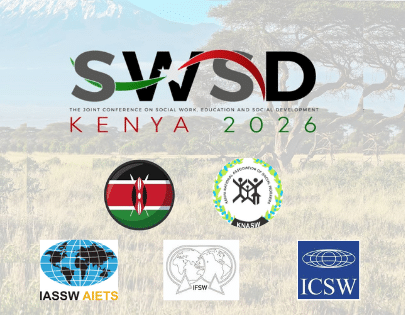
SAVE THE DATE – SWSD 2026
Unifi4future – call for proposals for the development of innovative and ambitious project proposals.

IASSW Global Standards for Social Work Education and Training e Learning Official Announcement Webinar
Recent news.

Post Category
- Announcements
- Consultation on Next Global Agenda (2020-2030)
- Covid-19 News
- COVID-19 Stories
- Covid-19 Teaching
- Members Zone
- News and Updates
- Non classifié(e)
- Post Format
- Sin categorizar
- Uncategorized
- Marketplace
- Marketplace Morning Report
- Marketplace Tech
- Make Me Smart
- This is Uncomfortable
- The Uncertain Hour
- How We Survive
- Financially Inclined
- Million Bazillion
- Marketplace Minute®
- Corner Office from Marketplace

- Latest Stories
- Collections
- Smart Speaker Skills
- Corrections
- Ethics Policy
- Submissions
- Individuals
- Corporate Sponsorship
- Foundations

Kyla Scanlon wants to remind us that “people are the economy”

Share Now on:
- https://www.marketplace.org/2024/05/30/kyla-scanlon-wants-to-remind-us-that-people-are-the-economy/ COPY THE LINK
HTML EMBED:

Get the Podcast

- Amazon Music
Back in 2021, when GameStop stocks started to surge (along with other meme stocks like AMC and Blackberry), Kyla Scanlon started making TikTok videos. “I kind of noticed that there’s a gap between how people understood the economy and what was actually happening,” said Scanlon in an interview with “Marketplace” host Kai Ryssdal.
This launched Scanlon’s career as an economic educator on social media, with hundreds of thousands of followers across both TikTok and Instagram . Her latest project is a book, “In This Economy? How Money & Markets Really Work,” where she hopes to help people better understand the nuances of the economy and that, at the end of the day, the economy is about people.
Click the media player above to hear Scanlon’s discussion with “Marketplace” host Kai Ryssdal about writing the book. The following is an excerpt from the book’s introduction laying out her philosophy on economic education.
What do we really need to know about how the economy works? The answer is pretty simple. Most of it is intuitive, even if it doesn’t seem so.
Honestly, it might be for the best if you can’t remember a thing your teacher said about monetary policy, since our normal ways of thinking about the economy bake in untested assumptions, “the way we’ve always done it” models, and a troubling disconnect between theory and the concerns of real people.
I know the last few years of economic news have been . . . disorienting. Reality feels almost like a dream state. That’s because the algorithms controlling our news feeds reward alarmism over objectivity, and the Fed—and all other central banks, for that matter—purposefully speaks in vague, wordy language—known as Fedspeak, defined by the economist Alan Blinder as “a turgid dialect of English”— in an attempt to stop the markets from overreacting, and with the unfortunate side effect of confusing everyone.
In other words, the headlines are served to us with a nice topping of whipped cream: fluff and froth exacerbating each and every issue so we become as reactive and worried and mad as possible. After all, the key to capturing clicks is convincing people that you have the answers to their questions—that you hold the proverbial key to all the solutions. If you can overcomplicate simple things loudly, people will pay attention.
Economic literacy for all has been my mission since high school, when I dabbled in options trading and wrote about it for my first blog, Scanlon onStocks. After majoring in finance, economics, and data analytics in college, I worked in asset management at Capital Group, conducting macroeconomic analysis and modeling investment strategies. But I found myself spending more and more time making videos and writing my newsletter, trying to connect the dots between what’s happening and why for everyone out there sweating over the hypersensationalized, jargon-filled economic headlines.
This book is for anyone who wants to understand how the economy works and their role in it, anyone trying to make sense of the way monetary policy plays games with their bank account balance, anyone wondering why borrowing money is expensive and how a downturn could impact their home buying opportunities, anyone intimidated by the terrible terminology and dusty theories, and anyone who’s ever looked outside their window into the world beyond and said, “Hmm, what really is going on out there?”
You might have scratched your head over questions such as:
- Is our high (and constantly increasing) national debt really a threat?
- Is money just a meme?
- What is a “mild” recession, exactly?
- What are Fed cred, Fed flexing, and Fedspeak?
- If many companies are earning record profits, why are they passing costs on to consumers?
- What are the behavioral pushes and pulls that make economies work?
When you become an informed economic citizen, you become aware not only of how economic problems and concerns affect you but also how you can benefit from those problems and concerns.
At the most basic level, economics is the study of change: how to handle change and how to predict change. Money changes hands. Just think of when you buy something as simple as a coffee. You swipe your card, the money goes from your bank account to the store’s bank account and eventually back out into the economy as the store buys more coffee beans or pays their workers or their rent. That’s a lot of change, and that’s just one transaction.
The economy is also a reflection of volatile human emotions, going up and down, surging and quieting. Things can be quite unstable in the long term, but business cycles trend upward toward growth—but the struggle toward stability can lead to economic events such as recessions and downturns. But just like how most things trend toward okay-ness in life, so does the economy! We often forget that the economy is really a bunch of people peopling around. This book in your hands right now is an economic activity. The car you drive is an economic activity. Going to the coffee shop, buying a new pair of pants, eating an apple—everything has some element of economics threaded into it.
I know that sounds kind of dorky—“You’re the economy!”—but it’s true. And everyone deserves the opportunity to understand it.
Excerpted from IN THIS ECONOMY? How Money & Markets Really Work by Kyla Scanlon. Copyright © 2024 by Kyla Scanlon. Published in the United States by Crown Currency, an imprint of the Crown Publishing Group, a division of Penguin Random House LLC, New York. All rights reserved.
Stories You Might Like

For TikTok maker Kyla Scanlon, it’s about making finance fun (and a bit chaotic)

Trying to explain the bank runs? The “takeconomy” might deserve some of the blame.

Are we finally exiting the “vibecession”?

Work is a big part of what’s making us unhappy, Gallup CEO says

Facing a labor shortage, construction tries to rebrand

Social media platforms are adapting to compete with TikTok. Are their efforts working?
There’s a lot happening in the world. Through it all, Marketplace is here for you.
You rely on Marketplace to break down the world’s events and tell you how it affects you in a fact-based, approachable way. We rely on your financial support to keep making that possible.
Your donation today powers the independent journalism that you rely on . For just $5/month, you can help sustain Marketplace so we can keep reporting on the things that matter to you.
Also Included in
- Monetary policy
- Social media
Latest Episodes From Our Shows

Possible severing of Israeli-Palestinian banking ties stirs worries

What, exactly, does "cost of living" mean — and how is it calculated?

Record hurricane season could hurt oil and gas production

"There is no economic solution for a political problem": The state of the Palestinian economy

COMMENTS
Work education includes activities of services, foods, and community development. It focused on health and hygiene sectors, food, clothing, recreation, and social service in harmony with children's mental abilities and manual skills related to work education. Below is the list of activities any person can enroll themselves in.
WORK EDUCATION - Definition, Historical Perspective, Concept and Objectives Definition of Work Education :- Work Education is viewed as purposive and meaningful manual work, organized as integral part of the learning process and resulting into goods or services useful to the community, besides the pleasure of self-fulfillment.
This essay is part of a series of articles on the future of education. For much of human history, education has served an important purpose, ensuring we have the tools to survive. People need jobs ...
2.2 Work-based learning is a powerful form of pedagogy 169 2.3 Work-based learning can improve individuals' career development 171 2.4 Work-based learning can lead to better youth transitions 172 2.5 Work-based learning can raise the quality of vocational education and training 173 3 Making work-based learning work 176
Work-based learning. " Work-based learning ( WBL) is an educational strategy that provides students with real-life work experiences where they can apply academic and technical skills and develop their employability." [1] It is a series of educational courses which integrate the school or university curriculum with the workplace to create a ...
WBL in ESSA. ESSA references WBL in three separate sections. In Section 1112, the legislation states that local education agency plans should describe support for WBL programs to provide students with exposure to industry professionals and the option to earn academic credit. Section 2103 includes professional development for teachers and administrators on WBL instruction as an allowable use of ...
UNESCO connects education to the fast-evolving world of work through its promotion of skills for work and life. Technical and vocational education and training (TVET) helps youth and adults develop the abilities, knowledge, values and attitudes they need to find decent work and contribute to building a peaceful, healthy, just and sustainable world.
This requires coordinated efforts among government, philanthropy, the business community, and the education sector. However, as our nation's economic and labor market opportunities evolve, the lack of alignment among K-12, higher education, and the world of work is further exposed and compromises our resilience and success.
Summary. This chapter aims to discuss what constitutes the project of vocational education through the elaboration of its key purposes. Although taking many and diverse institutional forms, and being perhaps the least unitary of educational sectors, vocational education stands as a distinct and long-standing educational provision premised on its own specific set of purposes.
Work Education is a distinct curricular area created specifically for providing children with opportunities to participate in social and economic activities both inside and outside the classroom, which would help them understand scientific principles and procedures involved in various different types of work. The competencies that are to be ...
Team iCEV. Work-based learning is a federally-supported program in career and technical education (CTE) that connects workplaces to the classroom to prepare students for real-world careers. While every state has its own variations of work-based learning and what it entails, the goal of every program is the same — to prepare the next ...
This is where career and technical education (CTE) comes in. CTE is a broad term for education that combines academic and technical skills with the knowledge and training needed to succeed in today's labor market. CTE prepares students for the world of work by introducing them to workplace competencies in a real-world, applied context.
Definition. Education that is designed for learners to acquire the knowledge, skills and competencies specific to a particular occupation or trade or class of occupations or trades. Vocational education may have work-based components (e.g. apprenticeships). Successful completion of such programmes leads to labour-market relevant vocational ...
Work-study recipients earn their funds in paychecks. This aid is intended to help with everyday expenses and not to cover tuition, housing or other large costs. FWS students work varying hours ...
Project Zero's Next Level Lab will look to unlock the wealth of recent research from the fields of cognitive science, neuroscience, and the learning sciences to better understand what it means to be an expert learner and to reimagine how learning happens — in both K-12 and workforce development. Born of an idea first pitched in 2019 to ...
Education is a discipline that is concerned with methods of teaching and learning in schools or school-like environments as opposed to various nonformal and informal means of socialization (e.g., rural development projects and education through parent-child relationships).
The issue of inequality is particularly important and, indeed, is pervasive across all three core functions. The second is that even if education is respected as a distinct role (ie more than merely a handmaiden to meeting the alleged needs of the economy), this does not mean education will work as a manifest human good.
Check the website : https://prepwithharshita.com/ (for notes, Free and Paid PDF and Videos )Telegram Link :https://t.me/PrepwithharshitaIf you feel my conte...
What they mean is that higher levels of knowledge, skill and qualifications are linked to better-paid employment. ... However, whether you want to rationalise or critique an unequal society, the education-to-work nexus is a critical part of the explanation of how society works to distribute resources. In this chapter, we examine the connections ...
Education is the most powerful weapon which you can use to change the world. — Nelson Mandela, 1918-2013, South African President, philanthropist. The object of education is to teach us to love ...
Work-study is a financial aid program funded at the federal or state level that helps college and graduate students in financial need to get part-time jobs alongside their studies. The income earned from work-study can help with tuition, living expenses and other education-related costs.
About Us. Founded in 1952, the Council on Social Work Education (CSWE) is the national association representing social work education in the United States. Its members include over 750 accredited baccalaureate and master's degree social work programs, as well as individual social work educators, practitioners, and agencies dedicated to ...
Education definition: the act or process of imparting or acquiring general knowledge, developing the powers of reasoning and judgment, and generally of preparing oneself or others intellectually for mature life.. See examples of EDUCATION used in a sentence.
Climate change education is the main thematic focus of ESD as it helps people understand and address the impacts of the climate crisis, empowering them with the knowledge, skills, values and attitudes needed to act as agents of change. The importance of education and training to address climate change is recognized in the UN Framework Convention on Climate Change, the Paris Agreement and the ...
For the purposes of this Code, "technology-assisted social work services" include any social work services that involve the use of computers, mobile or landline telephones, tablets, video technology, or other electronic or digital technologies; this includes the use of various electronic or digital platforms, such as the Internet, online ...
Please agree to all the terms and conditions before proceeding to the next step
Misinformation is false or inaccurate information—getting the facts wrong. Disinformation is false information which is deliberately intended to mislead—intentionally making the misstating facts.
Work is a big part of what's making us unhappy, Gallup CEO says Facing a labor shortage, construction tries to rebrand Social media platforms are adapting to compete with TikTok.
Krugler said that being named a recipient of this award is the honor of a career. Flattered and honored to receive the award, he said he is lucky to work alongside many talented and accomplished colleagues who have inspired him to be the best teacher he can be. Among those colleagues are even former students, like Winifred Redfearn. "Dr.